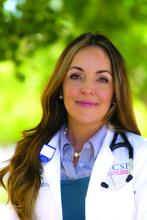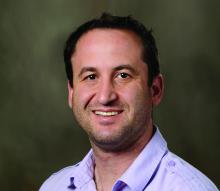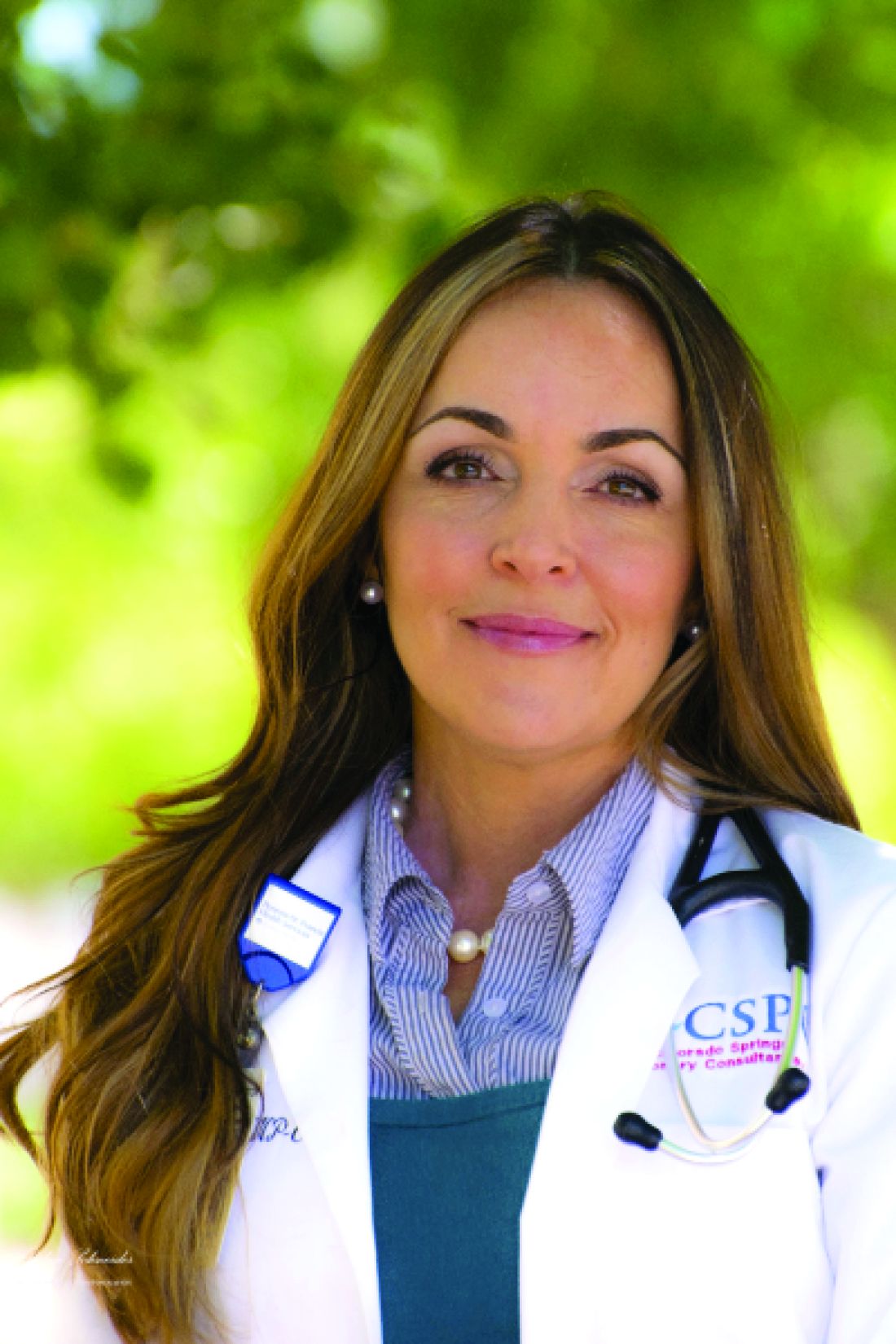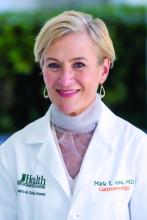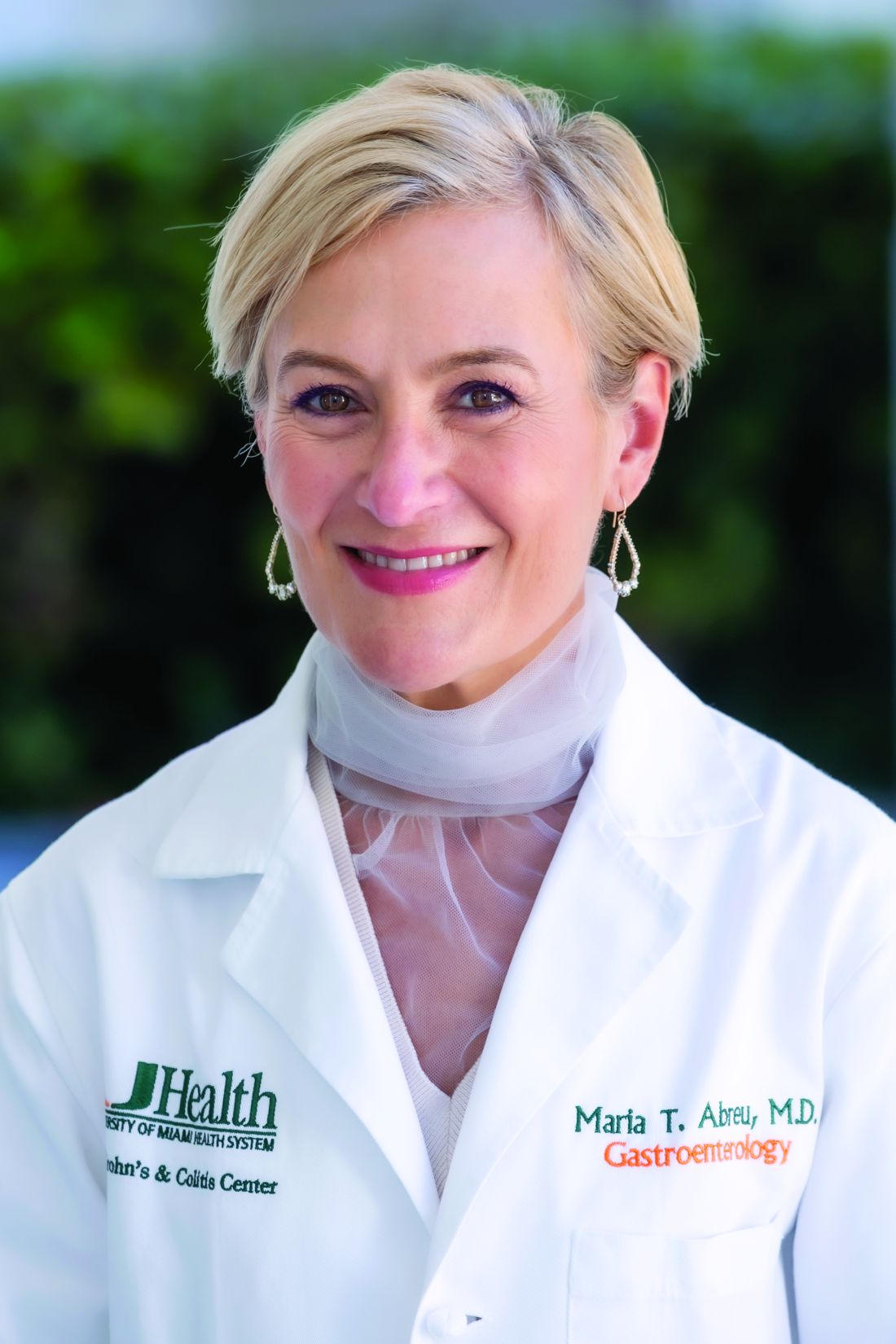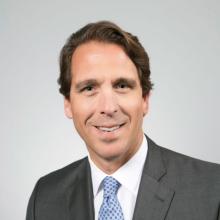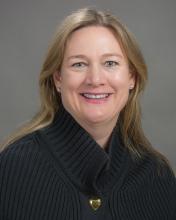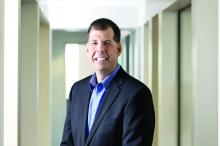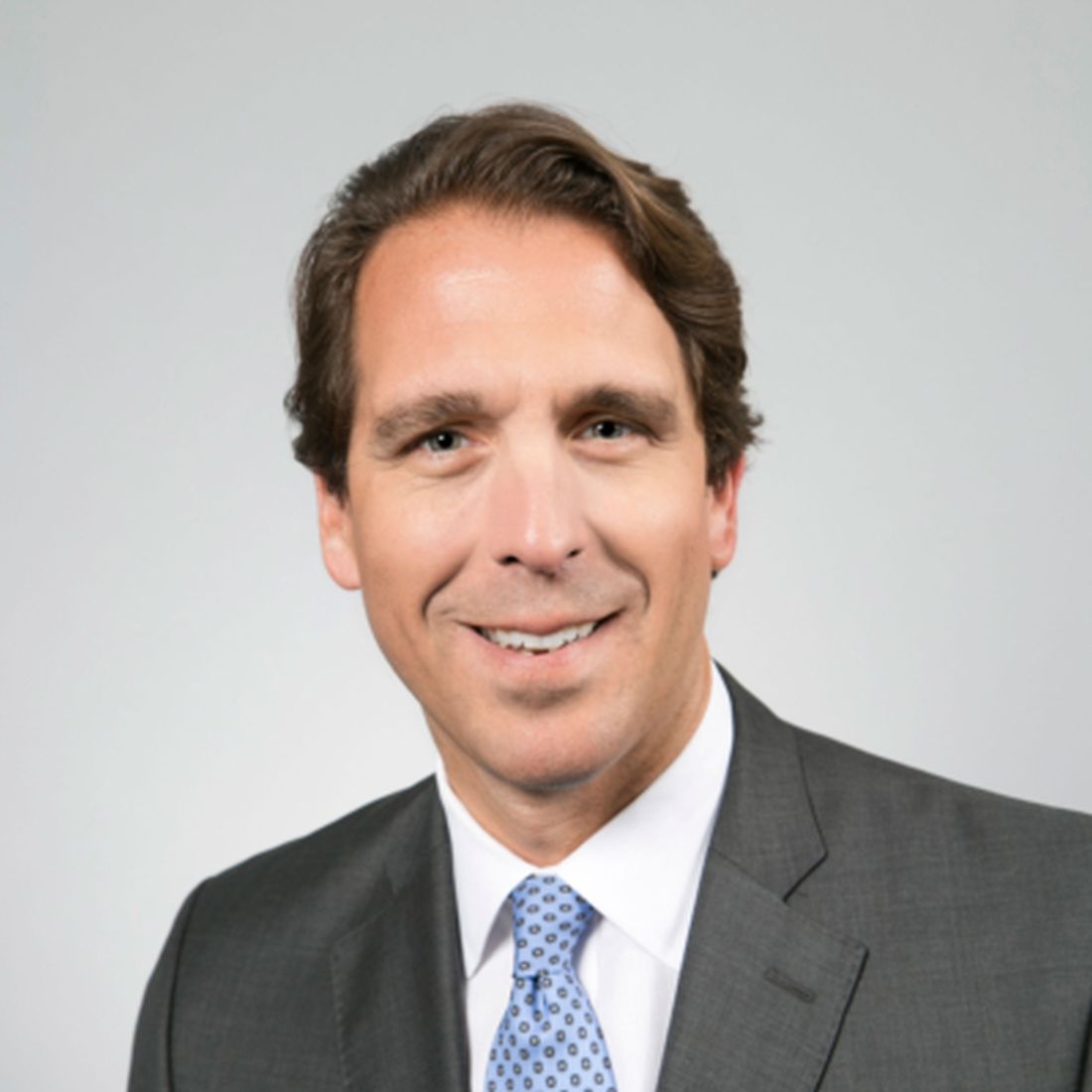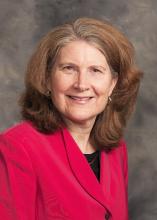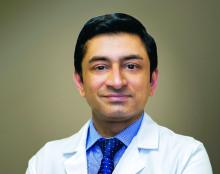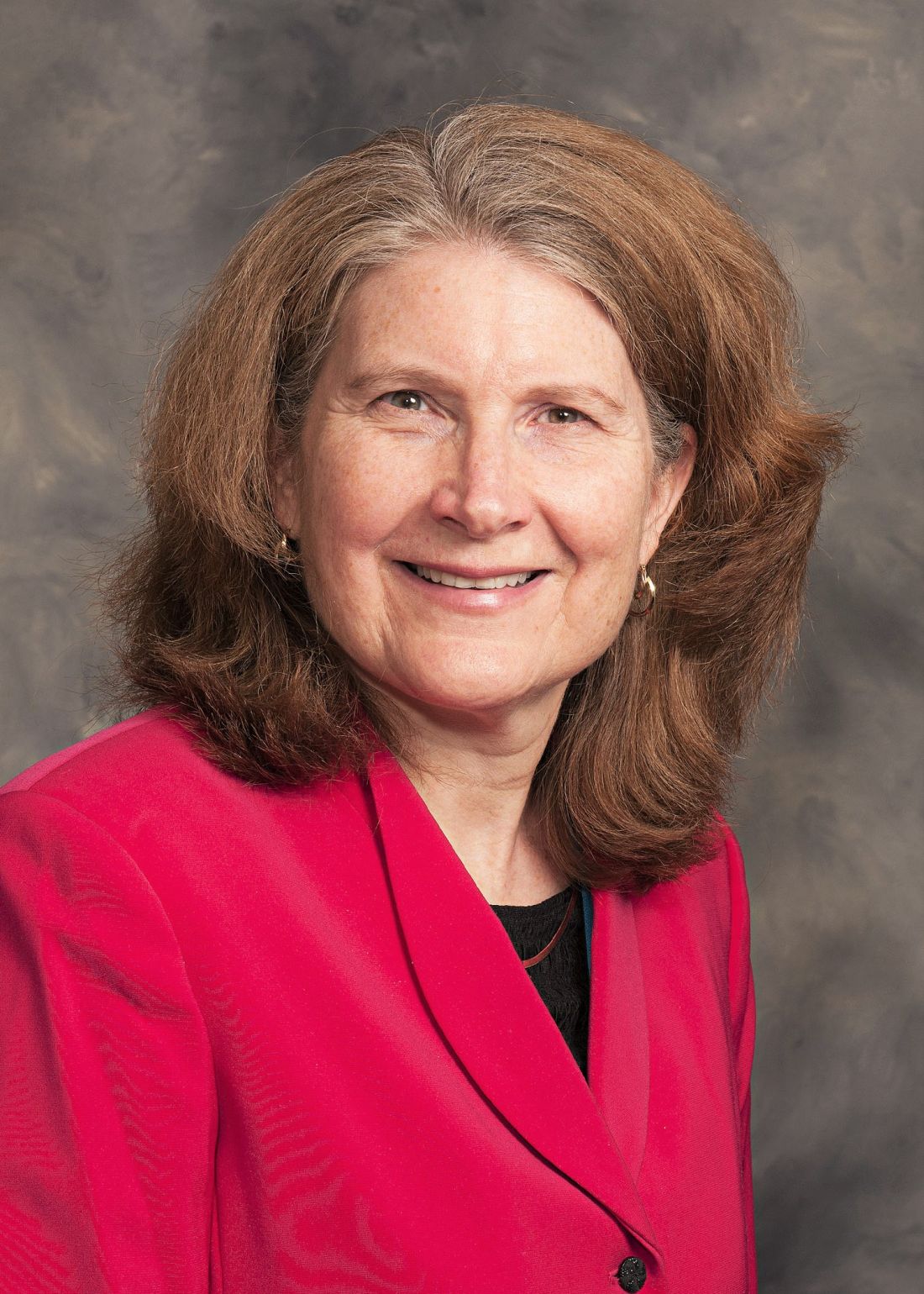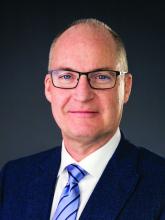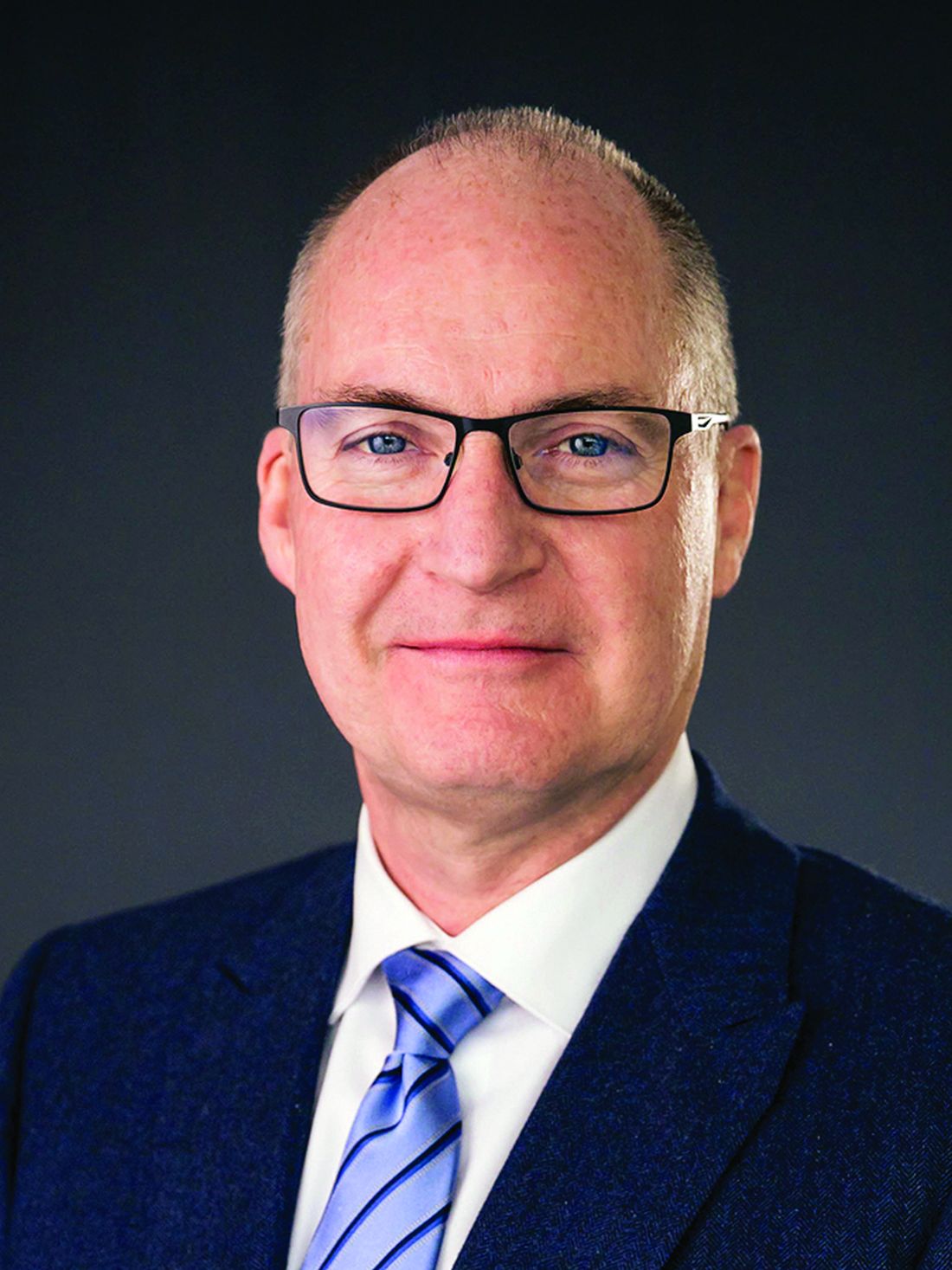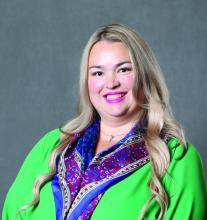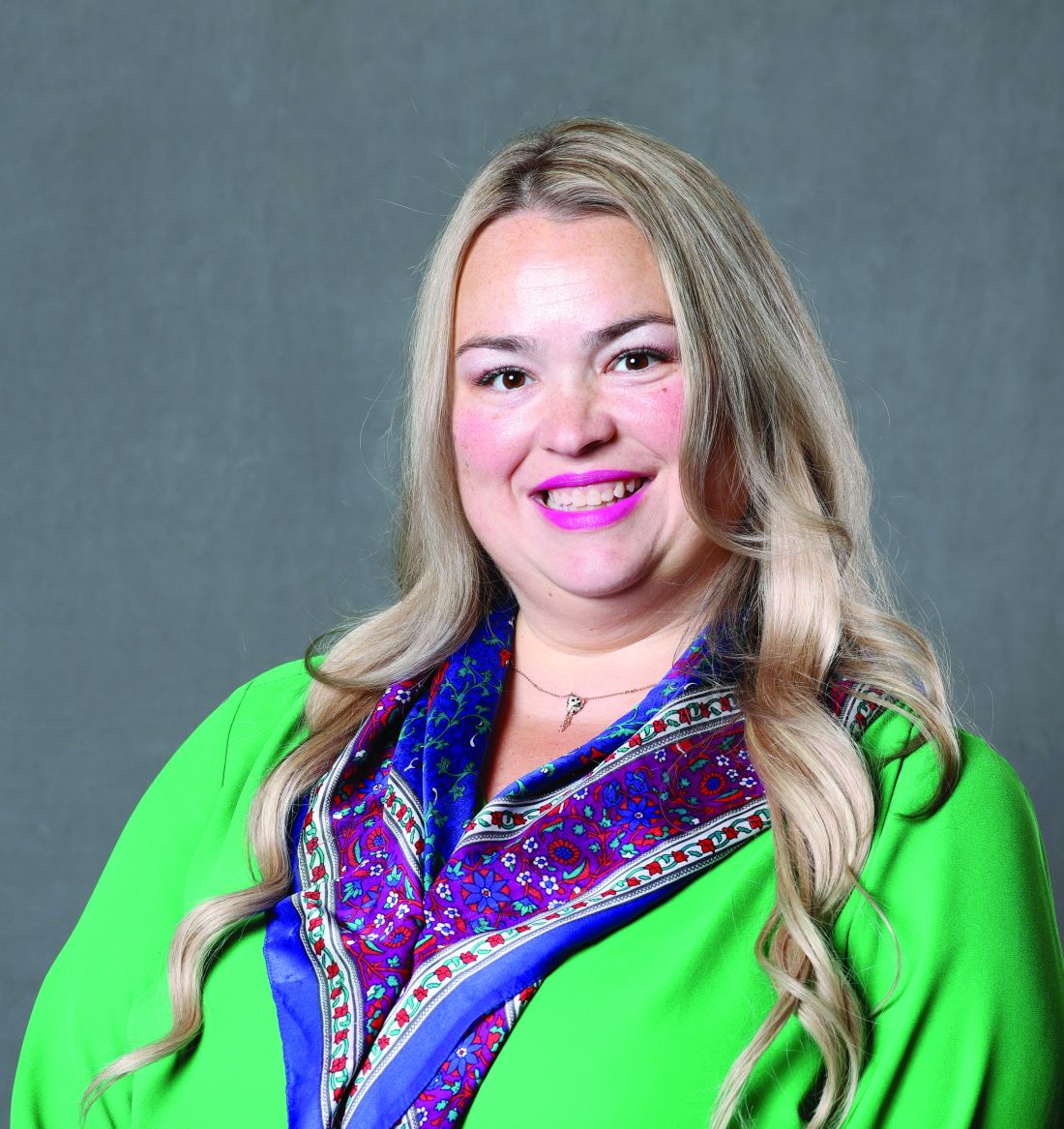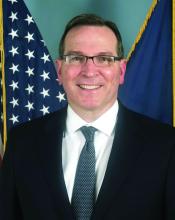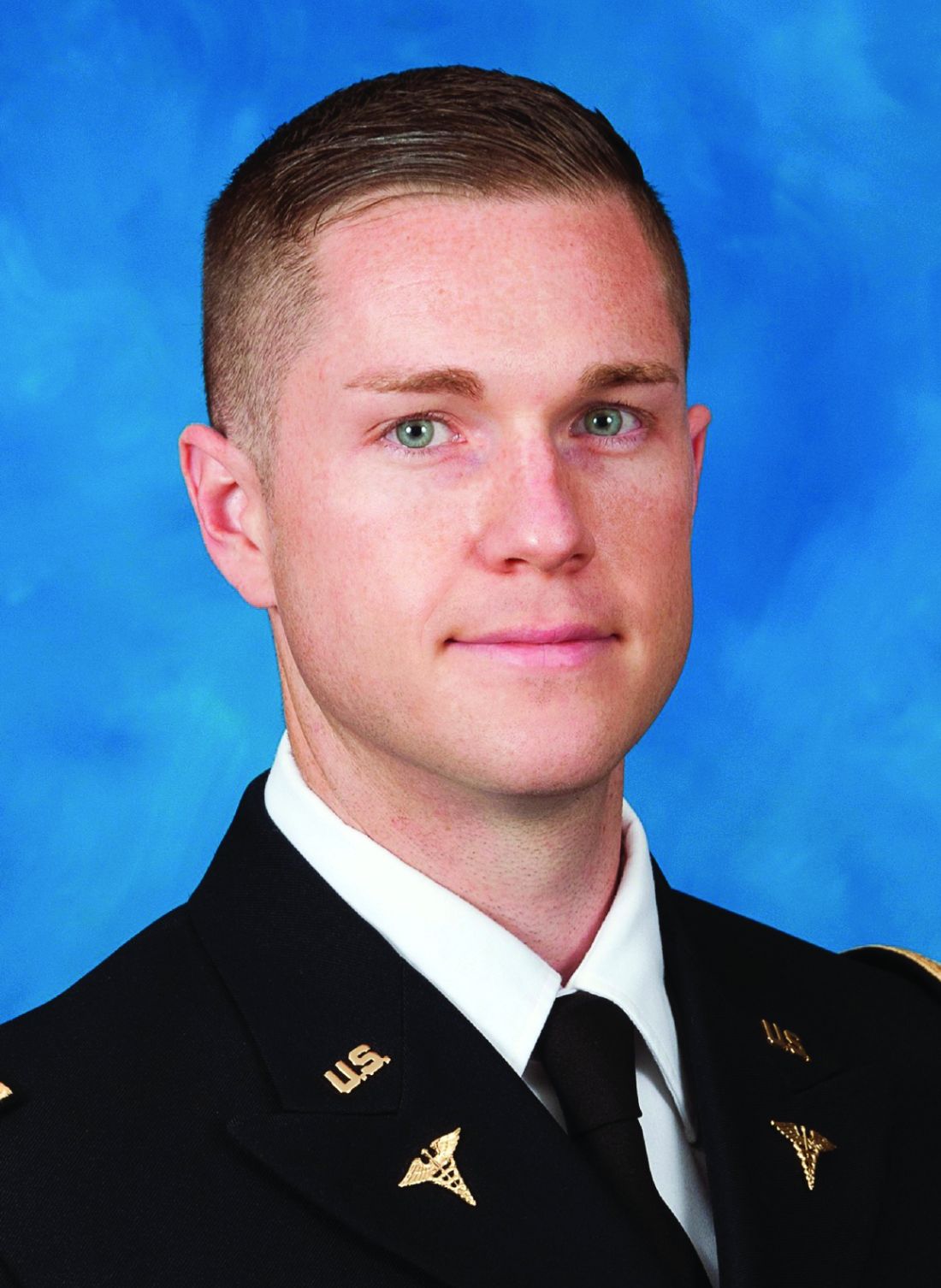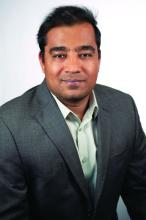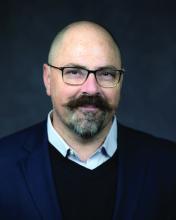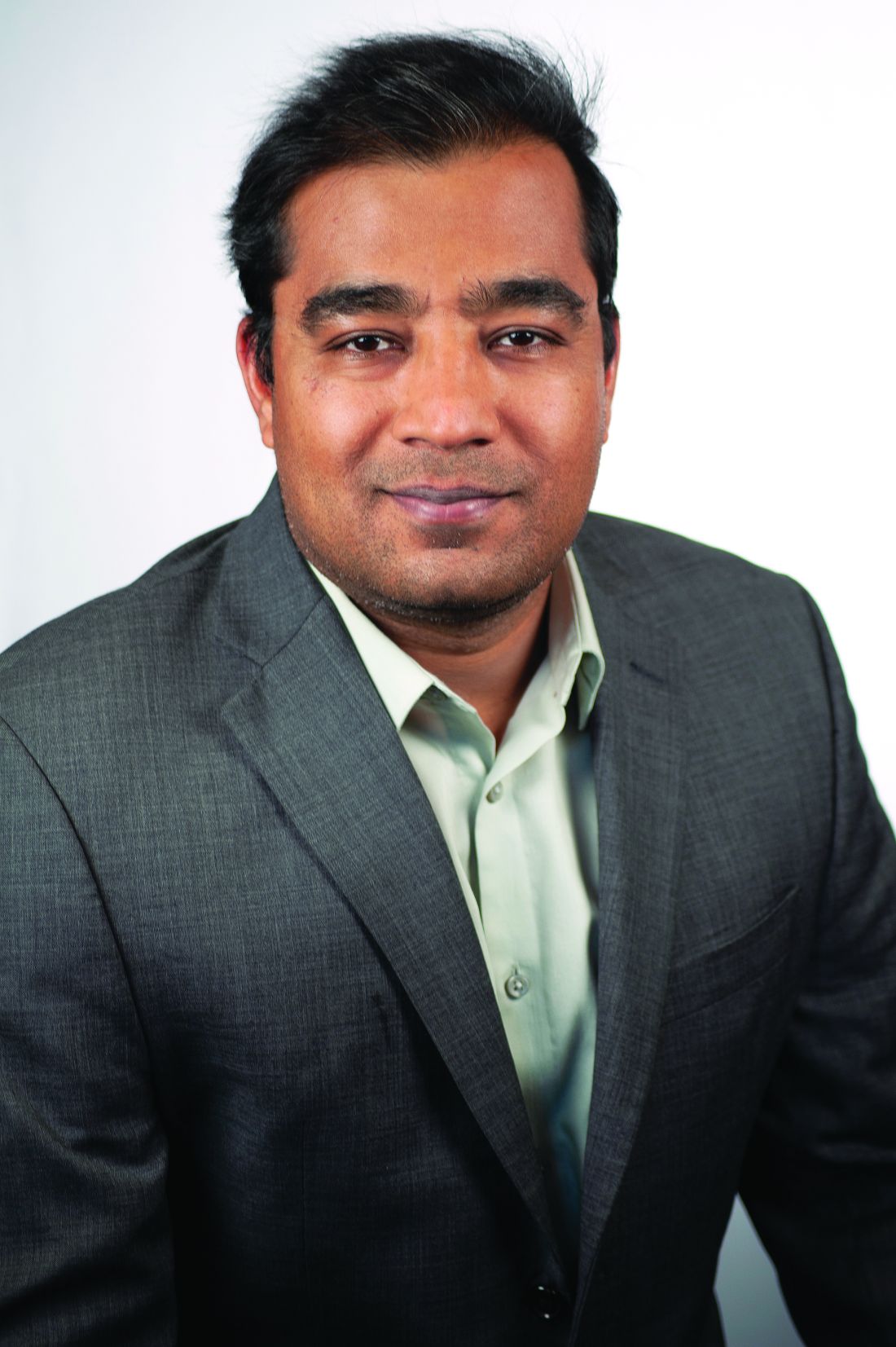User login
Top reads from the CHEST journal portfolio
Understanding RA with COPD, lung cancer prediction models, and chronic cardiac dysfunction
Journal CHEST®
Does Rheumatoid Arthritis Increase the Risk of COPD?
By: Chiwook Chung, MD, and colleagues
Notably, individuals with seropositive RA exhibit a greater risk of COPD onset than those with seronegative RA. Although smoking history didn’t affect the relationship between RA and COPD, monitoring respiratory symptoms and pulmonary function in patients with RA, especially patients who are seropositive, is crucial. These findings underscore the importance of interdisciplinary collaboration between rheumatologists and pulmonologists to enhance early detection and management strategies for pulmonary complications in patients with RA.
– Commentary by Corinne Young, MSN, FNP-C, FCCP, Member of the CHEST Physician® Editorial Board
CHEST Pulmonary®
The Lung Cancer Prediction Model “Stress Test”
By: Brent E. Heideman, MD, and colleagues
Current lung cancer prediction models have limited utility in high-risk patients referred for diagnostic biopsy. In a study of 322 indeterminate pulmonary nodules, the Brock, Mayo Clinic, Herder, and Veterans Affairs models showed modest discrimination between benign and malignant nodules (AUCs 0.67-0.77). The models performed poorly for low-risk patients (negative predictive values 63%-71%) and suboptimally for high-risk patients (positive predictive values 73%-87%), suggesting referring physicians use additional clinical information not captured in these models to identify high-risk patients needing biopsy. New prediction models and biomarkers specifically developed and calibrated for high-risk populations are needed to better inform clinical decision-making. Incorporating interval imaging to assess changes in nodule characteristics could potentially improve model performance. Tailored risk assessment tools are crucial for optimizing management and reducing unnecessary invasive procedures in this challenging patient population.
– Commentary by Russell Miller, MD, Member of the CHEST Physician Editorial Board
CHEST Critical Care ®
Characterizing Cardiac Function in ICU Survivors of Sepsis
By: Kevin Garrity, MBChB, and colleagues
While chronic cardiac dysfunction is one of the proposed mechanisms of long-term impairment post critical illness, its prevalence, mechanisms, and associations with disability following admission for sepsis are not well understood. Garrity and colleagues describe the Characterization of Cardiovascular Function in ICU Survivors of Sepsis (CONDUCT-ICU) protocol, a prospective study including two ICUs in Scotland aimed to better define cardiovascular dysfunction in survivors of sepsis. Designed to enroll 69 patients, demographics, cardiac and inflammatory biomarkers, and echocardiograms will be obtained on ICU discharge with additional laboratory data, cardiac magnetic resonance imaging, and patient-reported outcome measures to be obtained at 6 to 10 weeks. This novel multimodal approach will provide understanding into the role of cardiovascular dysfunction following critical illness as well as offer mechanistic insights. The investigators hope to obtain operational and pilot data for larger future studies.
– Commentary by Eugene Yuriditsky, MD, FCCP, Member of the CHEST Physician Editorial Board
Understanding RA with COPD, lung cancer prediction models, and chronic cardiac dysfunction
Understanding RA with COPD, lung cancer prediction models, and chronic cardiac dysfunction
Journal CHEST®
Does Rheumatoid Arthritis Increase the Risk of COPD?
By: Chiwook Chung, MD, and colleagues
Notably, individuals with seropositive RA exhibit a greater risk of COPD onset than those with seronegative RA. Although smoking history didn’t affect the relationship between RA and COPD, monitoring respiratory symptoms and pulmonary function in patients with RA, especially patients who are seropositive, is crucial. These findings underscore the importance of interdisciplinary collaboration between rheumatologists and pulmonologists to enhance early detection and management strategies for pulmonary complications in patients with RA.
– Commentary by Corinne Young, MSN, FNP-C, FCCP, Member of the CHEST Physician® Editorial Board
CHEST Pulmonary®
The Lung Cancer Prediction Model “Stress Test”
By: Brent E. Heideman, MD, and colleagues
Current lung cancer prediction models have limited utility in high-risk patients referred for diagnostic biopsy. In a study of 322 indeterminate pulmonary nodules, the Brock, Mayo Clinic, Herder, and Veterans Affairs models showed modest discrimination between benign and malignant nodules (AUCs 0.67-0.77). The models performed poorly for low-risk patients (negative predictive values 63%-71%) and suboptimally for high-risk patients (positive predictive values 73%-87%), suggesting referring physicians use additional clinical information not captured in these models to identify high-risk patients needing biopsy. New prediction models and biomarkers specifically developed and calibrated for high-risk populations are needed to better inform clinical decision-making. Incorporating interval imaging to assess changes in nodule characteristics could potentially improve model performance. Tailored risk assessment tools are crucial for optimizing management and reducing unnecessary invasive procedures in this challenging patient population.
– Commentary by Russell Miller, MD, Member of the CHEST Physician Editorial Board
CHEST Critical Care ®
Characterizing Cardiac Function in ICU Survivors of Sepsis
By: Kevin Garrity, MBChB, and colleagues
While chronic cardiac dysfunction is one of the proposed mechanisms of long-term impairment post critical illness, its prevalence, mechanisms, and associations with disability following admission for sepsis are not well understood. Garrity and colleagues describe the Characterization of Cardiovascular Function in ICU Survivors of Sepsis (CONDUCT-ICU) protocol, a prospective study including two ICUs in Scotland aimed to better define cardiovascular dysfunction in survivors of sepsis. Designed to enroll 69 patients, demographics, cardiac and inflammatory biomarkers, and echocardiograms will be obtained on ICU discharge with additional laboratory data, cardiac magnetic resonance imaging, and patient-reported outcome measures to be obtained at 6 to 10 weeks. This novel multimodal approach will provide understanding into the role of cardiovascular dysfunction following critical illness as well as offer mechanistic insights. The investigators hope to obtain operational and pilot data for larger future studies.
– Commentary by Eugene Yuriditsky, MD, FCCP, Member of the CHEST Physician Editorial Board
Journal CHEST®
Does Rheumatoid Arthritis Increase the Risk of COPD?
By: Chiwook Chung, MD, and colleagues
Notably, individuals with seropositive RA exhibit a greater risk of COPD onset than those with seronegative RA. Although smoking history didn’t affect the relationship between RA and COPD, monitoring respiratory symptoms and pulmonary function in patients with RA, especially patients who are seropositive, is crucial. These findings underscore the importance of interdisciplinary collaboration between rheumatologists and pulmonologists to enhance early detection and management strategies for pulmonary complications in patients with RA.
– Commentary by Corinne Young, MSN, FNP-C, FCCP, Member of the CHEST Physician® Editorial Board
CHEST Pulmonary®
The Lung Cancer Prediction Model “Stress Test”
By: Brent E. Heideman, MD, and colleagues
Current lung cancer prediction models have limited utility in high-risk patients referred for diagnostic biopsy. In a study of 322 indeterminate pulmonary nodules, the Brock, Mayo Clinic, Herder, and Veterans Affairs models showed modest discrimination between benign and malignant nodules (AUCs 0.67-0.77). The models performed poorly for low-risk patients (negative predictive values 63%-71%) and suboptimally for high-risk patients (positive predictive values 73%-87%), suggesting referring physicians use additional clinical information not captured in these models to identify high-risk patients needing biopsy. New prediction models and biomarkers specifically developed and calibrated for high-risk populations are needed to better inform clinical decision-making. Incorporating interval imaging to assess changes in nodule characteristics could potentially improve model performance. Tailored risk assessment tools are crucial for optimizing management and reducing unnecessary invasive procedures in this challenging patient population.
– Commentary by Russell Miller, MD, Member of the CHEST Physician Editorial Board
CHEST Critical Care ®
Characterizing Cardiac Function in ICU Survivors of Sepsis
By: Kevin Garrity, MBChB, and colleagues
While chronic cardiac dysfunction is one of the proposed mechanisms of long-term impairment post critical illness, its prevalence, mechanisms, and associations with disability following admission for sepsis are not well understood. Garrity and colleagues describe the Characterization of Cardiovascular Function in ICU Survivors of Sepsis (CONDUCT-ICU) protocol, a prospective study including two ICUs in Scotland aimed to better define cardiovascular dysfunction in survivors of sepsis. Designed to enroll 69 patients, demographics, cardiac and inflammatory biomarkers, and echocardiograms will be obtained on ICU discharge with additional laboratory data, cardiac magnetic resonance imaging, and patient-reported outcome measures to be obtained at 6 to 10 weeks. This novel multimodal approach will provide understanding into the role of cardiovascular dysfunction following critical illness as well as offer mechanistic insights. The investigators hope to obtain operational and pilot data for larger future studies.
– Commentary by Eugene Yuriditsky, MD, FCCP, Member of the CHEST Physician Editorial Board
For One Colorado GI, Private Practice Is Anything But Routine
Lisa Mathew, MD, wants to quell any misconceptions that private practice is dull or routine. “That has not been my experience at all,” says Dr. Mathew, a partner with South Denver Gastroenterology in the suburbs of Denver, Colorado.
“It’s an area within GI where we can be quite nimble in trialing new technologies, optimizing patients’ access to care and working to ensure a positive patient experience,” she said.
Nationwide, a flourishing GI private practice community engages in ongoing dialogue about improvements, navigating a changing healthcare environment, and innovation. “That has been a surprising and wonderful twist in my career,” she added.
Dr. Mathew fosters that dialogue through Gastro Broadcast, a podcast she shares with several other GI physicians. Targeted toward private GI practice, it highlights innovations within the community, providing updates on practice management and other technological advances.
In an interview, she spoke frankly about her favorite recent podcast guest, the challenges she’s faced in her career, and why her fellow GI specialists are her “tribe.”
Q: Why did you choose GI?
Dr. Mathew: In medical school at Duke University, I was considering going into ob.gyn., but academically I was a little more drawn toward internal medicine. While I was in my residency at the University of Pennsylvania, I really clicked with the gastroenterologists. I enjoyed their sense of humor. They were dealing with complex medical issues but doing so with a sense of levity and enjoyment in their work. When I entered fellowship at the University of Washington, I felt like I found my tribe. This was a group of people who really love their work, love medicine, love being able to develop their procedural skills, and keep a sense of humor about themselves. I married a cardiologist (and he’s a hilarious cardiologist), but the world of cardiology is a little more buttoned up. I like that GI is a little more relaxed.
Q: What gives you the most joy in your day-to-day practice?
Dr. Mathew: My patients. They are funny and genuine, and they allow you into these moments of vulnerability — it’s an honor to walk through that together. I’m always so grateful for the trust they put in me in those moments. As my practice has matured, it’s been incredible to watch those relationships grow, as well as begin caring for husbands, wives, sons and daughters of my patients. I enjoy being a part of my community.
Q: Can you talk about an interesting recent guest you had on your podcast? Who was it and why did he or she stand out?
Dr. Mathew: Russ Arjal, MD, AGAF, cofounder, chief medical officer and president of Telebelly Health. He’s been working on a platform for exclusively telehealth services that improves access to care; pairing patients with brick-and-mortar gastroenterology to provide any necessary procedural care, such as colonoscopy and upper endoscopy. It was a fantastic interview. I think it’s so refreshing and inspiring to see how people innovate within the field of GI. On the procedural side, you see this all the time. With my advanced endoscopy colleagues, they’re constantly pushing the boundaries of what we can do procedurally. My academic colleagues are constantly thinking through what the next best treatment is or how best can we optimize care. And, in the world of private practice, we’re thinking about practice care delivery — how to improve access and make the experience of being a patient better, with the ultimate goal of improving health outcomes.
Q: What fears did you have to push past to get to where you are in your career?
Dr. Mathew: Imposter Syndrome is a very, very common issue, maybe somewhat more for women in GI. I think it’s something that everybody wrestles with to some degree. For me, it was developing confidence not just in my clinical skills, but in learning all the complexities of running a small business. It takes time to develop confidence in your abilities and judgment. I think to some degree, that’s normal. It just takes a while to settle into whatever your chosen career path is. Having a community and strong mentors to support me has made all the difference.
Q: Describe your biggest practice-related challenge and what you are doing to address it.
Dr. Mathew: One of the greatest challenges in my career has been navigating COVID — both with just the tremendous sea change it had on our ability to practice, as well as the financial consequences to someone in private practice. Those were very challenging times to deliver the care that was needed, protect staff, and to maintain a small business. Fortunately, as with many practices across the nation, we’ve emerged through that.
We pivoted, we innovated with telehealth and other services that allowed us to care for our patients. But there were a lot of lessons learned and a lot of difficult moments.
Q: What teacher or mentor had the greatest impact on you?
Dr. Mathew: My dad has taught me the value of hard work. Being a physician just comes in tandem with hard work. And my mom, who is a nurse, has always shown the importance of empathy. Without it, everything else is a little empty. Medicine is a combination of skill and hard work, but also an ability to connect with other people. Empathy is essential to that.
Q: Describe how you would spend a free Saturday afternoon.
Dr. Mathew: We have three children who are native Coloradans so skiing is their birthright. Our entire family are diehard skiers. This is our joy. When you talk about the beach versus mountains debate, we are firmly team mountains. On a perfect Saturday afternoon, I’m on the slopes with my little crew, just tearing it up, having a great time.
Lightning Round
Texting or talking?
Texting
Favorite city in U.S. besides the one you live in?
Washington, D.C.
Favorite breakfast?
Avocado toast
Place you most want to travel to?
South America
Favorite junk food?
Candy
Favorite season?
Winter
How many cups of coffee do you drink per day?
2 or 3
If you weren’t a gastroenterologist, what would you be?
Ski coach
Best Halloween costume you ever wore?
Bunch of grapes
Favorite type of music?
Indie folk
Favorite movie genre?
Books, not into movies
Cat person or dog person?
Neither, but I am a certified beekeeper
What song do you have to sing along with when you hear it?
Anything by Queen
Introvert or extrovert?
Extrovert with introverted tendencies
Favorite holiday?
Thanksgiving
Optimist or pessimist?
100% glass half full
Lisa Mathew, MD, wants to quell any misconceptions that private practice is dull or routine. “That has not been my experience at all,” says Dr. Mathew, a partner with South Denver Gastroenterology in the suburbs of Denver, Colorado.
“It’s an area within GI where we can be quite nimble in trialing new technologies, optimizing patients’ access to care and working to ensure a positive patient experience,” she said.
Nationwide, a flourishing GI private practice community engages in ongoing dialogue about improvements, navigating a changing healthcare environment, and innovation. “That has been a surprising and wonderful twist in my career,” she added.
Dr. Mathew fosters that dialogue through Gastro Broadcast, a podcast she shares with several other GI physicians. Targeted toward private GI practice, it highlights innovations within the community, providing updates on practice management and other technological advances.
In an interview, she spoke frankly about her favorite recent podcast guest, the challenges she’s faced in her career, and why her fellow GI specialists are her “tribe.”
Q: Why did you choose GI?
Dr. Mathew: In medical school at Duke University, I was considering going into ob.gyn., but academically I was a little more drawn toward internal medicine. While I was in my residency at the University of Pennsylvania, I really clicked with the gastroenterologists. I enjoyed their sense of humor. They were dealing with complex medical issues but doing so with a sense of levity and enjoyment in their work. When I entered fellowship at the University of Washington, I felt like I found my tribe. This was a group of people who really love their work, love medicine, love being able to develop their procedural skills, and keep a sense of humor about themselves. I married a cardiologist (and he’s a hilarious cardiologist), but the world of cardiology is a little more buttoned up. I like that GI is a little more relaxed.
Q: What gives you the most joy in your day-to-day practice?
Dr. Mathew: My patients. They are funny and genuine, and they allow you into these moments of vulnerability — it’s an honor to walk through that together. I’m always so grateful for the trust they put in me in those moments. As my practice has matured, it’s been incredible to watch those relationships grow, as well as begin caring for husbands, wives, sons and daughters of my patients. I enjoy being a part of my community.
Q: Can you talk about an interesting recent guest you had on your podcast? Who was it and why did he or she stand out?
Dr. Mathew: Russ Arjal, MD, AGAF, cofounder, chief medical officer and president of Telebelly Health. He’s been working on a platform for exclusively telehealth services that improves access to care; pairing patients with brick-and-mortar gastroenterology to provide any necessary procedural care, such as colonoscopy and upper endoscopy. It was a fantastic interview. I think it’s so refreshing and inspiring to see how people innovate within the field of GI. On the procedural side, you see this all the time. With my advanced endoscopy colleagues, they’re constantly pushing the boundaries of what we can do procedurally. My academic colleagues are constantly thinking through what the next best treatment is or how best can we optimize care. And, in the world of private practice, we’re thinking about practice care delivery — how to improve access and make the experience of being a patient better, with the ultimate goal of improving health outcomes.
Q: What fears did you have to push past to get to where you are in your career?
Dr. Mathew: Imposter Syndrome is a very, very common issue, maybe somewhat more for women in GI. I think it’s something that everybody wrestles with to some degree. For me, it was developing confidence not just in my clinical skills, but in learning all the complexities of running a small business. It takes time to develop confidence in your abilities and judgment. I think to some degree, that’s normal. It just takes a while to settle into whatever your chosen career path is. Having a community and strong mentors to support me has made all the difference.
Q: Describe your biggest practice-related challenge and what you are doing to address it.
Dr. Mathew: One of the greatest challenges in my career has been navigating COVID — both with just the tremendous sea change it had on our ability to practice, as well as the financial consequences to someone in private practice. Those were very challenging times to deliver the care that was needed, protect staff, and to maintain a small business. Fortunately, as with many practices across the nation, we’ve emerged through that.
We pivoted, we innovated with telehealth and other services that allowed us to care for our patients. But there were a lot of lessons learned and a lot of difficult moments.
Q: What teacher or mentor had the greatest impact on you?
Dr. Mathew: My dad has taught me the value of hard work. Being a physician just comes in tandem with hard work. And my mom, who is a nurse, has always shown the importance of empathy. Without it, everything else is a little empty. Medicine is a combination of skill and hard work, but also an ability to connect with other people. Empathy is essential to that.
Q: Describe how you would spend a free Saturday afternoon.
Dr. Mathew: We have three children who are native Coloradans so skiing is their birthright. Our entire family are diehard skiers. This is our joy. When you talk about the beach versus mountains debate, we are firmly team mountains. On a perfect Saturday afternoon, I’m on the slopes with my little crew, just tearing it up, having a great time.
Lightning Round
Texting or talking?
Texting
Favorite city in U.S. besides the one you live in?
Washington, D.C.
Favorite breakfast?
Avocado toast
Place you most want to travel to?
South America
Favorite junk food?
Candy
Favorite season?
Winter
How many cups of coffee do you drink per day?
2 or 3
If you weren’t a gastroenterologist, what would you be?
Ski coach
Best Halloween costume you ever wore?
Bunch of grapes
Favorite type of music?
Indie folk
Favorite movie genre?
Books, not into movies
Cat person or dog person?
Neither, but I am a certified beekeeper
What song do you have to sing along with when you hear it?
Anything by Queen
Introvert or extrovert?
Extrovert with introverted tendencies
Favorite holiday?
Thanksgiving
Optimist or pessimist?
100% glass half full
Lisa Mathew, MD, wants to quell any misconceptions that private practice is dull or routine. “That has not been my experience at all,” says Dr. Mathew, a partner with South Denver Gastroenterology in the suburbs of Denver, Colorado.
“It’s an area within GI where we can be quite nimble in trialing new technologies, optimizing patients’ access to care and working to ensure a positive patient experience,” she said.
Nationwide, a flourishing GI private practice community engages in ongoing dialogue about improvements, navigating a changing healthcare environment, and innovation. “That has been a surprising and wonderful twist in my career,” she added.
Dr. Mathew fosters that dialogue through Gastro Broadcast, a podcast she shares with several other GI physicians. Targeted toward private GI practice, it highlights innovations within the community, providing updates on practice management and other technological advances.
In an interview, she spoke frankly about her favorite recent podcast guest, the challenges she’s faced in her career, and why her fellow GI specialists are her “tribe.”
Q: Why did you choose GI?
Dr. Mathew: In medical school at Duke University, I was considering going into ob.gyn., but academically I was a little more drawn toward internal medicine. While I was in my residency at the University of Pennsylvania, I really clicked with the gastroenterologists. I enjoyed their sense of humor. They were dealing with complex medical issues but doing so with a sense of levity and enjoyment in their work. When I entered fellowship at the University of Washington, I felt like I found my tribe. This was a group of people who really love their work, love medicine, love being able to develop their procedural skills, and keep a sense of humor about themselves. I married a cardiologist (and he’s a hilarious cardiologist), but the world of cardiology is a little more buttoned up. I like that GI is a little more relaxed.
Q: What gives you the most joy in your day-to-day practice?
Dr. Mathew: My patients. They are funny and genuine, and they allow you into these moments of vulnerability — it’s an honor to walk through that together. I’m always so grateful for the trust they put in me in those moments. As my practice has matured, it’s been incredible to watch those relationships grow, as well as begin caring for husbands, wives, sons and daughters of my patients. I enjoy being a part of my community.
Q: Can you talk about an interesting recent guest you had on your podcast? Who was it and why did he or she stand out?
Dr. Mathew: Russ Arjal, MD, AGAF, cofounder, chief medical officer and president of Telebelly Health. He’s been working on a platform for exclusively telehealth services that improves access to care; pairing patients with brick-and-mortar gastroenterology to provide any necessary procedural care, such as colonoscopy and upper endoscopy. It was a fantastic interview. I think it’s so refreshing and inspiring to see how people innovate within the field of GI. On the procedural side, you see this all the time. With my advanced endoscopy colleagues, they’re constantly pushing the boundaries of what we can do procedurally. My academic colleagues are constantly thinking through what the next best treatment is or how best can we optimize care. And, in the world of private practice, we’re thinking about practice care delivery — how to improve access and make the experience of being a patient better, with the ultimate goal of improving health outcomes.
Q: What fears did you have to push past to get to where you are in your career?
Dr. Mathew: Imposter Syndrome is a very, very common issue, maybe somewhat more for women in GI. I think it’s something that everybody wrestles with to some degree. For me, it was developing confidence not just in my clinical skills, but in learning all the complexities of running a small business. It takes time to develop confidence in your abilities and judgment. I think to some degree, that’s normal. It just takes a while to settle into whatever your chosen career path is. Having a community and strong mentors to support me has made all the difference.
Q: Describe your biggest practice-related challenge and what you are doing to address it.
Dr. Mathew: One of the greatest challenges in my career has been navigating COVID — both with just the tremendous sea change it had on our ability to practice, as well as the financial consequences to someone in private practice. Those were very challenging times to deliver the care that was needed, protect staff, and to maintain a small business. Fortunately, as with many practices across the nation, we’ve emerged through that.
We pivoted, we innovated with telehealth and other services that allowed us to care for our patients. But there were a lot of lessons learned and a lot of difficult moments.
Q: What teacher or mentor had the greatest impact on you?
Dr. Mathew: My dad has taught me the value of hard work. Being a physician just comes in tandem with hard work. And my mom, who is a nurse, has always shown the importance of empathy. Without it, everything else is a little empty. Medicine is a combination of skill and hard work, but also an ability to connect with other people. Empathy is essential to that.
Q: Describe how you would spend a free Saturday afternoon.
Dr. Mathew: We have three children who are native Coloradans so skiing is their birthright. Our entire family are diehard skiers. This is our joy. When you talk about the beach versus mountains debate, we are firmly team mountains. On a perfect Saturday afternoon, I’m on the slopes with my little crew, just tearing it up, having a great time.
Lightning Round
Texting or talking?
Texting
Favorite city in U.S. besides the one you live in?
Washington, D.C.
Favorite breakfast?
Avocado toast
Place you most want to travel to?
South America
Favorite junk food?
Candy
Favorite season?
Winter
How many cups of coffee do you drink per day?
2 or 3
If you weren’t a gastroenterologist, what would you be?
Ski coach
Best Halloween costume you ever wore?
Bunch of grapes
Favorite type of music?
Indie folk
Favorite movie genre?
Books, not into movies
Cat person or dog person?
Neither, but I am a certified beekeeper
What song do you have to sing along with when you hear it?
Anything by Queen
Introvert or extrovert?
Extrovert with introverted tendencies
Favorite holiday?
Thanksgiving
Optimist or pessimist?
100% glass half full
Congratulations to the 2024 AGA Research Foundation awardees!
The program serves as a catalyst for discovery and career growth among the most promising researchers in gastroenterology and hepatology.
“This year’s awardees are an exceptional group of investigators who are committed to furthering patient care through research,” said Michael Camilleri, MD, AGAF, chair, AGA Research Foundation. “The AGA Research Foundation is proud to fund these investigators and their ongoing efforts to advance GI research at a critical time in their careers. We believe the Foundation’s investment will ultimately enable new discoveries in gastroenterology and hepatology that will benefit patients.”
Treatment options for digestive diseases begin with vigorous research. The AGA Research Foundation supports medical investigators as they advance our understanding of gastrointestinal and liver conditions. Here are this year’s award recipients:
RESEARCH SCHOLAR AWARDS
AGA Research Scholar Award
- Karen Jane Dunbar, PhD, Columbia University, New York, New York
- Aaron Hecht, MD, PhD, Hospital of the University of Pennsylvania, Philadelphia, Pennsylvania
- Sarah Maxwell, MD, University of California, San Francisco
- Chung Sang Tse, MD, University of Pennsylvania, Philadelphia, Pennsylvania
- Jason (Yanjia) Zhang, MD, PhD, Boston Children’s Hospital, Massachusetts
AGA-Bristol Myers Squibb Research Scholar Award in Inflammatory Bowel Disease
- Joseph R. Burclaff, PhD, University of North Carolina at Chapel Hill
SPECIALTY AWARDS
AGA-Caroline Craig Augustyn & Damian Augustyn Award in Digestive Cancer
- Swathi Eluri, MD, MSCR, Mayo Clinic, Rochester, Minnesota
AGA-R. Robert & Sally Funderburg Research Award in Gastric Cancer
- Jianwen Que, MD, PhD, Columbia University, New York, New York
AGA-Pfizer Fellowship-to-Faculty Transition Award
- Lianna Wood, MD, PhD, Boston Children’s Hospital, Massachusetts
AGA-Ironwood Fellowship-to-Faculty Transition Award
- ZeNan Li Chang, MD, PhD, Washington University School of Medicine, St. Louis, Missouri
PILOT AWARDS
AGA Pilot Research Award
- Linda C. Cummings, MD, MS, University Hospitals Cleveland Medical Center, Cleveland, Ohio
- Pooja Mehta, MD, MSCS, University of Colorado Denver
- Guilherme Piovezani Ramos, MD, Boston Children’s Hospital
- Simon Schwoerer, PhD, University of Chicago, Illinois
- Yankai Wen, PhD, University of Texas Health Science Center at Houston
AGA-Pfizer Pilot Research Award in Non-Alcoholic Steatohepatitis
- Alice Cheng, PhD, Stanford University, California
- Petra Hirsova, PhD, PharmD, Mayo Clinic, Rochester, Minnesota
- Sarah Maxwell, MD, University of California, San Francisco
AGA-Pfizer Pilot Research Award in Inflammatory Bowel Disease
- David Boone, PhD, Indiana University, Indianapolis, Indiana
- Sara Chloe Di Rienzi, PhD, Baylor College of Medicine, Houston, Texas
- Jared Andrew Sninsky, MD, MSCR, Baylor College of Medicine, Houston, Texas
UNDERGRADUATE RESEARCH AWARDS
AGA-Aman Armaan Ahmed Family Surf for Success Program
- Eli Burstein, Yeshiva University, New York, New York
- Chloe Carlisle, University of Florida, Gainesville, Florida
- Adna Hassan, University of Minnesota Rochester
- Nicole Rodriguez Hilario, Barry University, Miami, Florida
- Maryam Jimoh, College of Wooster, Wooster, Ohio
- Viktoriya Kalinina, Brandeis University, Waltham, Massachusetts
AGA-Dr. Harvey Young Education & Development Foundation’s Young Guts Scholar Program
- Rafaella Lavalle Lacerda de Almeida, Michigan State University, East Lansing, Michigan
- Lara Cheesman, John’s Hopkins University School of Medicine, Baltimore, Maryland
- Cass Condray, University of Oklahoma, Norman, Oklahoma
- Daniel Juarez, Columbia University, New York, New York
- Jason Lin, University of Michigan, Ann Arbor, Michigan
- Riya Malhotra, Case Western Reserve University, Cleveland, Ohio
- Brian Nguyen, Brown University, Providence, Rhode Island
- Mahmoud (Moudy) Salem, Stony Brook University, Stony Brook, New York
ABSTRACT AWARDS
AGA Fellow Abstract of the Year Award
- Andrea Tou, MD Children’s Hospital of Philadelphia, Pennsylvania
AGA Fellow Abstract Awards
- Manik Aggarwal, MBBS, Mayo Clinic, Rochester, Minnesota
- Kole Buckley, PhD, University of Pennsylvania, Philadelphia, Pennsylvania
- Jane Ha, MD, Massachusetts General Hospital, Boston, Massachusetts
- Brent Hiramoto, MD, Brigham and Women’s Hospital, Boston, Massachusetts
- Md Obaidul Islam, PhD, University of Miami, Coral Gables, Florida
- Kanak Kennedy, MD, MPH, Children’s Hospital of Philadelphia, Pennsylvania
- Hanseul Kim, PhD, MS, Massachusetts General Hospital, Boston, Massachusetts
- Chiraag Kulkarni, MD, Stanford University, Stanford, California
- Su-Hyung Lee, PhD, DVM, Vanderbilt University Medical Center, Nashville, Tennessee
- Caroline Muiler, PhD, Yale School of Medicine, New Haven, Connecticut
- Sarah Najjar, PhD, New York University, New York, New York
- Ronaldo Panganiban, MD, PhD Penn State Hershey Medical Center, Hershey, Pennsylvania
- Perseus Patel, MD, Stanford University, California
- Hassan Sinan, MD, Johns Hopkins University, Baltimore, Maryland
- Patricia Snarski, PhD, Tulane University, New Orleans, Louisiana
- Fernando Vicentini, PhD, MS, McMaster University, Hamilton, Ontario, Canada
- Remington Winter, MD, University of Manitoba – Health Sciences Centre, Winnipeg, Manitoba, Canada
- Tiaosi Xing, PhD, MBBS, MS, Penn State College of Medicine, Hershey, Pennsylvania
AGA Student Abstract of the Year Award
- Jazmyne Jackson, Temple University, Philadelphia, Pennsylvania
AGA Student Abstract Award
- Valentina Alvarez, University of Washington School of Medicine, Seattle, Washington
- Yasaman Bahojb Habibyan, MS, University of Calgary, Alberta, Canada
- Tessa Herman, MD, University of Minnesota, Minneapolis-Saint Paul, Minnesota
- Jason Jin, Yale School of Medicine, New Haven, Connecticut
- Frederikke Larsen, Western University, London, Ontario, Canada
- Kara McNamara, Vanderbilt University, Nashville, Tennessee
- Julia Sessions, MD, University of Virginia, Charlottesville, Virginia
- Scott Silvey, MS, Virginia Commonwealth University, Richmond, Virginia
- Vijaya Sundaram, Marshall University School of Medicine, Huntington, West Virginia
- Kafayat Yusuf, MS, University of Kansas Medical Center, Kansas City, Kansas
AGA–Eric Esrailian Student Abstract Prize
- Brent Gawey, MD, MS, Mayo Clinic, Rochester, Minnesota
- Fei Li, MBBS, MS, University of Michigan, Ann Arbor, Michigan
- Emily Wong, University of Toronto, Ontario, Canada
- Jordan Woodard, MD, Prisma Health – Upstate, Greenville, South Carolina
AGA–Radhika Srinivasan Student Abstract Prize
- Raz Abdulqadir, MS, Penn State College of Medicine, Hershey, Pennsylvania
- Rebecca Ekeanyanwu, MHS, Meharry Medical College, Nashville, Tennessee
- Jared Morris, MD, University of Manitoba, Winnipeg City, Manitoba, Canada
- Rachel Stubler, Medical University of South Carolina, Charleston, South Carolina
AGA Abstract Award for Health Disparities Research
- Saqr Alsakarneh, MD University of Missouri-Kansas City
- Marco Noriega, MD, Beth Israel Deaconess Medical Center, Boston, Massachusetts
- Temitope Olasehinde, MD, University Hospitals/Case Western Reserve University, Cleveland, Ohio
- Gabrielle Waclawik, MD, MPH, University of Wisconsin, Madison, Wisconsin
AGA-Moti L. & Kamla Rustgi International Travel Award
- W. Keith Tan, MBChB, University of Cambridge, Cambridge, England
- Elsa van Liere, MD Amsterdam Universitair Medische Centra, Amsterdam, Netherlands
The program serves as a catalyst for discovery and career growth among the most promising researchers in gastroenterology and hepatology.
“This year’s awardees are an exceptional group of investigators who are committed to furthering patient care through research,” said Michael Camilleri, MD, AGAF, chair, AGA Research Foundation. “The AGA Research Foundation is proud to fund these investigators and their ongoing efforts to advance GI research at a critical time in their careers. We believe the Foundation’s investment will ultimately enable new discoveries in gastroenterology and hepatology that will benefit patients.”
Treatment options for digestive diseases begin with vigorous research. The AGA Research Foundation supports medical investigators as they advance our understanding of gastrointestinal and liver conditions. Here are this year’s award recipients:
RESEARCH SCHOLAR AWARDS
AGA Research Scholar Award
- Karen Jane Dunbar, PhD, Columbia University, New York, New York
- Aaron Hecht, MD, PhD, Hospital of the University of Pennsylvania, Philadelphia, Pennsylvania
- Sarah Maxwell, MD, University of California, San Francisco
- Chung Sang Tse, MD, University of Pennsylvania, Philadelphia, Pennsylvania
- Jason (Yanjia) Zhang, MD, PhD, Boston Children’s Hospital, Massachusetts
AGA-Bristol Myers Squibb Research Scholar Award in Inflammatory Bowel Disease
- Joseph R. Burclaff, PhD, University of North Carolina at Chapel Hill
SPECIALTY AWARDS
AGA-Caroline Craig Augustyn & Damian Augustyn Award in Digestive Cancer
- Swathi Eluri, MD, MSCR, Mayo Clinic, Rochester, Minnesota
AGA-R. Robert & Sally Funderburg Research Award in Gastric Cancer
- Jianwen Que, MD, PhD, Columbia University, New York, New York
AGA-Pfizer Fellowship-to-Faculty Transition Award
- Lianna Wood, MD, PhD, Boston Children’s Hospital, Massachusetts
AGA-Ironwood Fellowship-to-Faculty Transition Award
- ZeNan Li Chang, MD, PhD, Washington University School of Medicine, St. Louis, Missouri
PILOT AWARDS
AGA Pilot Research Award
- Linda C. Cummings, MD, MS, University Hospitals Cleveland Medical Center, Cleveland, Ohio
- Pooja Mehta, MD, MSCS, University of Colorado Denver
- Guilherme Piovezani Ramos, MD, Boston Children’s Hospital
- Simon Schwoerer, PhD, University of Chicago, Illinois
- Yankai Wen, PhD, University of Texas Health Science Center at Houston
AGA-Pfizer Pilot Research Award in Non-Alcoholic Steatohepatitis
- Alice Cheng, PhD, Stanford University, California
- Petra Hirsova, PhD, PharmD, Mayo Clinic, Rochester, Minnesota
- Sarah Maxwell, MD, University of California, San Francisco
AGA-Pfizer Pilot Research Award in Inflammatory Bowel Disease
- David Boone, PhD, Indiana University, Indianapolis, Indiana
- Sara Chloe Di Rienzi, PhD, Baylor College of Medicine, Houston, Texas
- Jared Andrew Sninsky, MD, MSCR, Baylor College of Medicine, Houston, Texas
UNDERGRADUATE RESEARCH AWARDS
AGA-Aman Armaan Ahmed Family Surf for Success Program
- Eli Burstein, Yeshiva University, New York, New York
- Chloe Carlisle, University of Florida, Gainesville, Florida
- Adna Hassan, University of Minnesota Rochester
- Nicole Rodriguez Hilario, Barry University, Miami, Florida
- Maryam Jimoh, College of Wooster, Wooster, Ohio
- Viktoriya Kalinina, Brandeis University, Waltham, Massachusetts
AGA-Dr. Harvey Young Education & Development Foundation’s Young Guts Scholar Program
- Rafaella Lavalle Lacerda de Almeida, Michigan State University, East Lansing, Michigan
- Lara Cheesman, John’s Hopkins University School of Medicine, Baltimore, Maryland
- Cass Condray, University of Oklahoma, Norman, Oklahoma
- Daniel Juarez, Columbia University, New York, New York
- Jason Lin, University of Michigan, Ann Arbor, Michigan
- Riya Malhotra, Case Western Reserve University, Cleveland, Ohio
- Brian Nguyen, Brown University, Providence, Rhode Island
- Mahmoud (Moudy) Salem, Stony Brook University, Stony Brook, New York
ABSTRACT AWARDS
AGA Fellow Abstract of the Year Award
- Andrea Tou, MD Children’s Hospital of Philadelphia, Pennsylvania
AGA Fellow Abstract Awards
- Manik Aggarwal, MBBS, Mayo Clinic, Rochester, Minnesota
- Kole Buckley, PhD, University of Pennsylvania, Philadelphia, Pennsylvania
- Jane Ha, MD, Massachusetts General Hospital, Boston, Massachusetts
- Brent Hiramoto, MD, Brigham and Women’s Hospital, Boston, Massachusetts
- Md Obaidul Islam, PhD, University of Miami, Coral Gables, Florida
- Kanak Kennedy, MD, MPH, Children’s Hospital of Philadelphia, Pennsylvania
- Hanseul Kim, PhD, MS, Massachusetts General Hospital, Boston, Massachusetts
- Chiraag Kulkarni, MD, Stanford University, Stanford, California
- Su-Hyung Lee, PhD, DVM, Vanderbilt University Medical Center, Nashville, Tennessee
- Caroline Muiler, PhD, Yale School of Medicine, New Haven, Connecticut
- Sarah Najjar, PhD, New York University, New York, New York
- Ronaldo Panganiban, MD, PhD Penn State Hershey Medical Center, Hershey, Pennsylvania
- Perseus Patel, MD, Stanford University, California
- Hassan Sinan, MD, Johns Hopkins University, Baltimore, Maryland
- Patricia Snarski, PhD, Tulane University, New Orleans, Louisiana
- Fernando Vicentini, PhD, MS, McMaster University, Hamilton, Ontario, Canada
- Remington Winter, MD, University of Manitoba – Health Sciences Centre, Winnipeg, Manitoba, Canada
- Tiaosi Xing, PhD, MBBS, MS, Penn State College of Medicine, Hershey, Pennsylvania
AGA Student Abstract of the Year Award
- Jazmyne Jackson, Temple University, Philadelphia, Pennsylvania
AGA Student Abstract Award
- Valentina Alvarez, University of Washington School of Medicine, Seattle, Washington
- Yasaman Bahojb Habibyan, MS, University of Calgary, Alberta, Canada
- Tessa Herman, MD, University of Minnesota, Minneapolis-Saint Paul, Minnesota
- Jason Jin, Yale School of Medicine, New Haven, Connecticut
- Frederikke Larsen, Western University, London, Ontario, Canada
- Kara McNamara, Vanderbilt University, Nashville, Tennessee
- Julia Sessions, MD, University of Virginia, Charlottesville, Virginia
- Scott Silvey, MS, Virginia Commonwealth University, Richmond, Virginia
- Vijaya Sundaram, Marshall University School of Medicine, Huntington, West Virginia
- Kafayat Yusuf, MS, University of Kansas Medical Center, Kansas City, Kansas
AGA–Eric Esrailian Student Abstract Prize
- Brent Gawey, MD, MS, Mayo Clinic, Rochester, Minnesota
- Fei Li, MBBS, MS, University of Michigan, Ann Arbor, Michigan
- Emily Wong, University of Toronto, Ontario, Canada
- Jordan Woodard, MD, Prisma Health – Upstate, Greenville, South Carolina
AGA–Radhika Srinivasan Student Abstract Prize
- Raz Abdulqadir, MS, Penn State College of Medicine, Hershey, Pennsylvania
- Rebecca Ekeanyanwu, MHS, Meharry Medical College, Nashville, Tennessee
- Jared Morris, MD, University of Manitoba, Winnipeg City, Manitoba, Canada
- Rachel Stubler, Medical University of South Carolina, Charleston, South Carolina
AGA Abstract Award for Health Disparities Research
- Saqr Alsakarneh, MD University of Missouri-Kansas City
- Marco Noriega, MD, Beth Israel Deaconess Medical Center, Boston, Massachusetts
- Temitope Olasehinde, MD, University Hospitals/Case Western Reserve University, Cleveland, Ohio
- Gabrielle Waclawik, MD, MPH, University of Wisconsin, Madison, Wisconsin
AGA-Moti L. & Kamla Rustgi International Travel Award
- W. Keith Tan, MBChB, University of Cambridge, Cambridge, England
- Elsa van Liere, MD Amsterdam Universitair Medische Centra, Amsterdam, Netherlands
The program serves as a catalyst for discovery and career growth among the most promising researchers in gastroenterology and hepatology.
“This year’s awardees are an exceptional group of investigators who are committed to furthering patient care through research,” said Michael Camilleri, MD, AGAF, chair, AGA Research Foundation. “The AGA Research Foundation is proud to fund these investigators and their ongoing efforts to advance GI research at a critical time in their careers. We believe the Foundation’s investment will ultimately enable new discoveries in gastroenterology and hepatology that will benefit patients.”
Treatment options for digestive diseases begin with vigorous research. The AGA Research Foundation supports medical investigators as they advance our understanding of gastrointestinal and liver conditions. Here are this year’s award recipients:
RESEARCH SCHOLAR AWARDS
AGA Research Scholar Award
- Karen Jane Dunbar, PhD, Columbia University, New York, New York
- Aaron Hecht, MD, PhD, Hospital of the University of Pennsylvania, Philadelphia, Pennsylvania
- Sarah Maxwell, MD, University of California, San Francisco
- Chung Sang Tse, MD, University of Pennsylvania, Philadelphia, Pennsylvania
- Jason (Yanjia) Zhang, MD, PhD, Boston Children’s Hospital, Massachusetts
AGA-Bristol Myers Squibb Research Scholar Award in Inflammatory Bowel Disease
- Joseph R. Burclaff, PhD, University of North Carolina at Chapel Hill
SPECIALTY AWARDS
AGA-Caroline Craig Augustyn & Damian Augustyn Award in Digestive Cancer
- Swathi Eluri, MD, MSCR, Mayo Clinic, Rochester, Minnesota
AGA-R. Robert & Sally Funderburg Research Award in Gastric Cancer
- Jianwen Que, MD, PhD, Columbia University, New York, New York
AGA-Pfizer Fellowship-to-Faculty Transition Award
- Lianna Wood, MD, PhD, Boston Children’s Hospital, Massachusetts
AGA-Ironwood Fellowship-to-Faculty Transition Award
- ZeNan Li Chang, MD, PhD, Washington University School of Medicine, St. Louis, Missouri
PILOT AWARDS
AGA Pilot Research Award
- Linda C. Cummings, MD, MS, University Hospitals Cleveland Medical Center, Cleveland, Ohio
- Pooja Mehta, MD, MSCS, University of Colorado Denver
- Guilherme Piovezani Ramos, MD, Boston Children’s Hospital
- Simon Schwoerer, PhD, University of Chicago, Illinois
- Yankai Wen, PhD, University of Texas Health Science Center at Houston
AGA-Pfizer Pilot Research Award in Non-Alcoholic Steatohepatitis
- Alice Cheng, PhD, Stanford University, California
- Petra Hirsova, PhD, PharmD, Mayo Clinic, Rochester, Minnesota
- Sarah Maxwell, MD, University of California, San Francisco
AGA-Pfizer Pilot Research Award in Inflammatory Bowel Disease
- David Boone, PhD, Indiana University, Indianapolis, Indiana
- Sara Chloe Di Rienzi, PhD, Baylor College of Medicine, Houston, Texas
- Jared Andrew Sninsky, MD, MSCR, Baylor College of Medicine, Houston, Texas
UNDERGRADUATE RESEARCH AWARDS
AGA-Aman Armaan Ahmed Family Surf for Success Program
- Eli Burstein, Yeshiva University, New York, New York
- Chloe Carlisle, University of Florida, Gainesville, Florida
- Adna Hassan, University of Minnesota Rochester
- Nicole Rodriguez Hilario, Barry University, Miami, Florida
- Maryam Jimoh, College of Wooster, Wooster, Ohio
- Viktoriya Kalinina, Brandeis University, Waltham, Massachusetts
AGA-Dr. Harvey Young Education & Development Foundation’s Young Guts Scholar Program
- Rafaella Lavalle Lacerda de Almeida, Michigan State University, East Lansing, Michigan
- Lara Cheesman, John’s Hopkins University School of Medicine, Baltimore, Maryland
- Cass Condray, University of Oklahoma, Norman, Oklahoma
- Daniel Juarez, Columbia University, New York, New York
- Jason Lin, University of Michigan, Ann Arbor, Michigan
- Riya Malhotra, Case Western Reserve University, Cleveland, Ohio
- Brian Nguyen, Brown University, Providence, Rhode Island
- Mahmoud (Moudy) Salem, Stony Brook University, Stony Brook, New York
ABSTRACT AWARDS
AGA Fellow Abstract of the Year Award
- Andrea Tou, MD Children’s Hospital of Philadelphia, Pennsylvania
AGA Fellow Abstract Awards
- Manik Aggarwal, MBBS, Mayo Clinic, Rochester, Minnesota
- Kole Buckley, PhD, University of Pennsylvania, Philadelphia, Pennsylvania
- Jane Ha, MD, Massachusetts General Hospital, Boston, Massachusetts
- Brent Hiramoto, MD, Brigham and Women’s Hospital, Boston, Massachusetts
- Md Obaidul Islam, PhD, University of Miami, Coral Gables, Florida
- Kanak Kennedy, MD, MPH, Children’s Hospital of Philadelphia, Pennsylvania
- Hanseul Kim, PhD, MS, Massachusetts General Hospital, Boston, Massachusetts
- Chiraag Kulkarni, MD, Stanford University, Stanford, California
- Su-Hyung Lee, PhD, DVM, Vanderbilt University Medical Center, Nashville, Tennessee
- Caroline Muiler, PhD, Yale School of Medicine, New Haven, Connecticut
- Sarah Najjar, PhD, New York University, New York, New York
- Ronaldo Panganiban, MD, PhD Penn State Hershey Medical Center, Hershey, Pennsylvania
- Perseus Patel, MD, Stanford University, California
- Hassan Sinan, MD, Johns Hopkins University, Baltimore, Maryland
- Patricia Snarski, PhD, Tulane University, New Orleans, Louisiana
- Fernando Vicentini, PhD, MS, McMaster University, Hamilton, Ontario, Canada
- Remington Winter, MD, University of Manitoba – Health Sciences Centre, Winnipeg, Manitoba, Canada
- Tiaosi Xing, PhD, MBBS, MS, Penn State College of Medicine, Hershey, Pennsylvania
AGA Student Abstract of the Year Award
- Jazmyne Jackson, Temple University, Philadelphia, Pennsylvania
AGA Student Abstract Award
- Valentina Alvarez, University of Washington School of Medicine, Seattle, Washington
- Yasaman Bahojb Habibyan, MS, University of Calgary, Alberta, Canada
- Tessa Herman, MD, University of Minnesota, Minneapolis-Saint Paul, Minnesota
- Jason Jin, Yale School of Medicine, New Haven, Connecticut
- Frederikke Larsen, Western University, London, Ontario, Canada
- Kara McNamara, Vanderbilt University, Nashville, Tennessee
- Julia Sessions, MD, University of Virginia, Charlottesville, Virginia
- Scott Silvey, MS, Virginia Commonwealth University, Richmond, Virginia
- Vijaya Sundaram, Marshall University School of Medicine, Huntington, West Virginia
- Kafayat Yusuf, MS, University of Kansas Medical Center, Kansas City, Kansas
AGA–Eric Esrailian Student Abstract Prize
- Brent Gawey, MD, MS, Mayo Clinic, Rochester, Minnesota
- Fei Li, MBBS, MS, University of Michigan, Ann Arbor, Michigan
- Emily Wong, University of Toronto, Ontario, Canada
- Jordan Woodard, MD, Prisma Health – Upstate, Greenville, South Carolina
AGA–Radhika Srinivasan Student Abstract Prize
- Raz Abdulqadir, MS, Penn State College of Medicine, Hershey, Pennsylvania
- Rebecca Ekeanyanwu, MHS, Meharry Medical College, Nashville, Tennessee
- Jared Morris, MD, University of Manitoba, Winnipeg City, Manitoba, Canada
- Rachel Stubler, Medical University of South Carolina, Charleston, South Carolina
AGA Abstract Award for Health Disparities Research
- Saqr Alsakarneh, MD University of Missouri-Kansas City
- Marco Noriega, MD, Beth Israel Deaconess Medical Center, Boston, Massachusetts
- Temitope Olasehinde, MD, University Hospitals/Case Western Reserve University, Cleveland, Ohio
- Gabrielle Waclawik, MD, MPH, University of Wisconsin, Madison, Wisconsin
AGA-Moti L. & Kamla Rustgi International Travel Award
- W. Keith Tan, MBChB, University of Cambridge, Cambridge, England
- Elsa van Liere, MD Amsterdam Universitair Medische Centra, Amsterdam, Netherlands
Introducing the 119th AGA President: Dr. Maria T. Abreu
She currently serves as the Martin Kalser Endowed Chair of Gastroenterology; professor of medicine, microbiology, and immunology; and director of the Crohn’s and Colitis Center at the University of Miami. Dr. Abreu is the fifth woman to lead AGA as president.
Born in New York and raised in New Jersey, Dr. Abreu grew up surrounded by a strong, tight-knit Cuban community. Her family moved to Miami when she was in the ninth grade. She later entered the 6-year medical program at the University of Miami, which was the beginning of her unparalleled academic and professional excellence in medicine.
Dr. Abreu is a leader in inflammatory bowel disease patient care, and she was honored by the prestigious Sherman Prize in 2019. Her service to AGA is lengthy and begins when she took on the role of fellow representative for the research grant committee. She has since sat on both the government advocacy and diversity committees. She also served as the chair of the Immunology, Microbiology and Inflammatory Bowel Diseases Section of the AGA Council, and later as chair of the full AGA Council. While chair she developed a more streamlined in-person planning committee meeting to better organize DDW.
When asked about goals for her presidency, Dr. Abreu wants to make DDW a better experience for the modern gastroenterologist. This includes finding that perfect balance between digesting the latest education and science with networking and socializing. She plans to collaborate with the presidents of the other societies to make this come to fruition.
Perhaps the area that Dr. Abreu is most passionate about is welcoming and fostering the growth of women in gastroenterology. She wants to support women who want to succeed in academics and in practice, who want ergonomics to match their work needs, and who want to have families.
“Maria is the ultimate ‘triple threat’: master scientist, master clinician, and devoted mentor. She has not only been a major player advancing knowledge in IBD, but also motivating and pushing others to develop successful careers,” said Andres Yarur, MD, AGAF, associate professor of medicine at Cedars-Sinai Medical Center. “Her work, brilliance, passion, and charm inspire all of us and will continue to inspire many generations to come.”
She currently serves as the Martin Kalser Endowed Chair of Gastroenterology; professor of medicine, microbiology, and immunology; and director of the Crohn’s and Colitis Center at the University of Miami. Dr. Abreu is the fifth woman to lead AGA as president.
Born in New York and raised in New Jersey, Dr. Abreu grew up surrounded by a strong, tight-knit Cuban community. Her family moved to Miami when she was in the ninth grade. She later entered the 6-year medical program at the University of Miami, which was the beginning of her unparalleled academic and professional excellence in medicine.
Dr. Abreu is a leader in inflammatory bowel disease patient care, and she was honored by the prestigious Sherman Prize in 2019. Her service to AGA is lengthy and begins when she took on the role of fellow representative for the research grant committee. She has since sat on both the government advocacy and diversity committees. She also served as the chair of the Immunology, Microbiology and Inflammatory Bowel Diseases Section of the AGA Council, and later as chair of the full AGA Council. While chair she developed a more streamlined in-person planning committee meeting to better organize DDW.
When asked about goals for her presidency, Dr. Abreu wants to make DDW a better experience for the modern gastroenterologist. This includes finding that perfect balance between digesting the latest education and science with networking and socializing. She plans to collaborate with the presidents of the other societies to make this come to fruition.
Perhaps the area that Dr. Abreu is most passionate about is welcoming and fostering the growth of women in gastroenterology. She wants to support women who want to succeed in academics and in practice, who want ergonomics to match their work needs, and who want to have families.
“Maria is the ultimate ‘triple threat’: master scientist, master clinician, and devoted mentor. She has not only been a major player advancing knowledge in IBD, but also motivating and pushing others to develop successful careers,” said Andres Yarur, MD, AGAF, associate professor of medicine at Cedars-Sinai Medical Center. “Her work, brilliance, passion, and charm inspire all of us and will continue to inspire many generations to come.”
She currently serves as the Martin Kalser Endowed Chair of Gastroenterology; professor of medicine, microbiology, and immunology; and director of the Crohn’s and Colitis Center at the University of Miami. Dr. Abreu is the fifth woman to lead AGA as president.
Born in New York and raised in New Jersey, Dr. Abreu grew up surrounded by a strong, tight-knit Cuban community. Her family moved to Miami when she was in the ninth grade. She later entered the 6-year medical program at the University of Miami, which was the beginning of her unparalleled academic and professional excellence in medicine.
Dr. Abreu is a leader in inflammatory bowel disease patient care, and she was honored by the prestigious Sherman Prize in 2019. Her service to AGA is lengthy and begins when she took on the role of fellow representative for the research grant committee. She has since sat on both the government advocacy and diversity committees. She also served as the chair of the Immunology, Microbiology and Inflammatory Bowel Diseases Section of the AGA Council, and later as chair of the full AGA Council. While chair she developed a more streamlined in-person planning committee meeting to better organize DDW.
When asked about goals for her presidency, Dr. Abreu wants to make DDW a better experience for the modern gastroenterologist. This includes finding that perfect balance between digesting the latest education and science with networking and socializing. She plans to collaborate with the presidents of the other societies to make this come to fruition.
Perhaps the area that Dr. Abreu is most passionate about is welcoming and fostering the growth of women in gastroenterology. She wants to support women who want to succeed in academics and in practice, who want ergonomics to match their work needs, and who want to have families.
“Maria is the ultimate ‘triple threat’: master scientist, master clinician, and devoted mentor. She has not only been a major player advancing knowledge in IBD, but also motivating and pushing others to develop successful careers,” said Andres Yarur, MD, AGAF, associate professor of medicine at Cedars-Sinai Medical Center. “Her work, brilliance, passion, and charm inspire all of us and will continue to inspire many generations to come.”
Advice, Support for Entrepreneurs at AGA Tech 2024
CHICAGO — Have a great tech idea to improve gastroenterology? Start-up companies have the potential to transform the practice of medicine, and to make founders a nice pot of money, but it is a difficult road. At the 2024 AGA Tech Summit, held at the Chicago headquarters of MATTER, a global healthcare startup incubator, investors and gastroenterologists discussed some of the key challenges and opportunities for GI startups.
The road is daunting, and founders must be dedicated to their companies but also maintain life balance. “It is very easy, following your passion, for your life to get out of check. I don’t know what the divorce rate is for entrepreneurs, but I personally was a victim of that. The culture that we built was addictive and it became all encompassing, and at the same time [I neglected] my home life,” Scott Fraser, managing director of the consulting company Fraser Healthcare, said during a “Scars and Stripes” panel at the summit.
For those willing to navigate those waters, there is help. Investors are prepared to provide seed money for companies with good ideas and a strong market. AGA itself has stepped into the investment field with its GI Opportunity Fund, which it launched in 2022 through a partnership with Varia Ventures. The fund’s capital comes from AGA members, with a minimum investment of $25,000. To date, AGA has made investments in six companies, at around $100,000 per company. “It’s not a large amount that we’re investing. We’re a lead investor that signals to other venture capital companies that this is a viable company,” Tom Serena, CEO of AGA, said in an interview.
The fund grew out of AGA’s commitment to boosting early-stage companies in the gastroenterology space. AGA has always supported GI device and tech companies through its Center for GI Innovation and Technology, which sponsored the AGA Tech Summit. The center now provides resources and advice for GI innovators and startups. The AGA Tech Summit has created a gathering place for entrepreneurs and innovators to share their experiences and learn from one another. “But what we were missing was the last mile, which is getting funding to the companies,” said Mr. Serena. The summit itself has been modified to increase the venture capital presence. “That’s the networking we’re trying to [create] here. Venture capitalists are well acquainted with these companies, but we feel that AGA can bring clinical due diligence, and the startups want to be exposed to venture capital,” said Mr. Serena.
During the “Learn from VC Strategists” panel, investors shared advice for entrepreneurs. The emphasis throughout was on marketable ideas that can fundamentally change healthcare practice, though inventions may not have the whiz-bang appeal of some new technologies of years past.
“We’re particularly focused on clinical models that actually work. There were a lot of companies for many years that were doing things that had minimal impact, or very incremental impact. Maybe they were helping identify certain patients, but they weren’t actually engaging those patients. We’re now looking very end-to-end and trying to make sure that it’s not just a good idea, but one that you can actually roll out, engage patients, and see the [return on investment] in that patient data,” said Kelsey Maguire, managing director of the Blue Venture Fund, which is a collaborative effort across Blue Cross Blue Shield companies.
Part of the reason for that shift is that healthcare has evolved in a way that has put more pressure on physicians, according to Barbara H. Jung, MD, AGAF, past president of AGA, who was present for the session. “I think that there’s huge burnout among gastroenterologists, [partly because] some of the systems have been optimized to get the most out of each specialist. I think we just have to get back to making work more enjoyable. [It could be less] fighting with the insurance companies, it could be that you spend less time typing after hours. It could be that it helps the team work more seamlessly, or it could be something that helps the patient prepare, so they have everything ready when they see the doctors. It’s thinking about how healthcare is delivered, and really in a patient and physician-centric way,” Dr. Jung said in an interview.
Anna Haghgooie, managing director of Valtruis, noted that, historically, new technology has been rewarded by the healthcare system. “It’s part of why we find ourselves where we are as an industry: There was nobody in the marketplace that was incented to roll out a cost-reducing technology, and those weren’t necessarily considered grand slams. But [I think] we’re at a tipping point on cost, and as a country will start purchasing in pretty meaningfully different ways, which opens up a lot of opportunities for those practical solutions to be grand slams. Everything that we look at has a component of virtual care, leveraging technology, whether it’s AI or just better workflow tools, better data and intelligence to make business decisions,” said Ms. Haghgooie. She did note that Valtruis does not work much with medical devices.
Specifically in the GI space, one panelist called for a shift away from novel colonoscopy technology. “I don’t know how many more bells and whistles we can ask for colonoscopy, which we’re very dependent on. Not that it’s not important, but I don’t think that’s where the real innovation is going to come. When you think about the cognitive side of the GI business: New diagnostics, things that are predictive of disease states, things that monitor disease, things that help you to know what people’s disease courses will be. I think as more and more interventions are done by endoscopists, you need more tools,” said Thomas Shehab, MD, managing partner at Arboretum Ventures.
Finally, AI has become a central component to investment decisions. Ms. Haghgooie said that Valtruis is focused on the infrastructure surrounding AI, such as the data that it requires to make or help guide decisions. That data can vary widely in quality, is difficult to index, exists in various silos, and is subject to a number of regulatory constraints on how to move or aggregate it. “So, a lot of what we’re focused on are the systems and tools that can enable the next gen application of AI. That’s one piece of the puzzle. The other is, I’d say that every company that we’ve either invested in or are looking at investing in, we ask the question: How are you planning to incorporate and leverage this next gen technology to drive your marginal cost-to-deliver down? In many cases you have to do that through business model redesign, because there is no fee-for-service code to get paid for leveraging AI to reduce your costs. You’ve got to have different payment structures in order to get the benefit of leveraging those types of technologies. When we’re sourcing and looking at deals, we’re looking at both of those angles,” she said.
CHICAGO — Have a great tech idea to improve gastroenterology? Start-up companies have the potential to transform the practice of medicine, and to make founders a nice pot of money, but it is a difficult road. At the 2024 AGA Tech Summit, held at the Chicago headquarters of MATTER, a global healthcare startup incubator, investors and gastroenterologists discussed some of the key challenges and opportunities for GI startups.
The road is daunting, and founders must be dedicated to their companies but also maintain life balance. “It is very easy, following your passion, for your life to get out of check. I don’t know what the divorce rate is for entrepreneurs, but I personally was a victim of that. The culture that we built was addictive and it became all encompassing, and at the same time [I neglected] my home life,” Scott Fraser, managing director of the consulting company Fraser Healthcare, said during a “Scars and Stripes” panel at the summit.
For those willing to navigate those waters, there is help. Investors are prepared to provide seed money for companies with good ideas and a strong market. AGA itself has stepped into the investment field with its GI Opportunity Fund, which it launched in 2022 through a partnership with Varia Ventures. The fund’s capital comes from AGA members, with a minimum investment of $25,000. To date, AGA has made investments in six companies, at around $100,000 per company. “It’s not a large amount that we’re investing. We’re a lead investor that signals to other venture capital companies that this is a viable company,” Tom Serena, CEO of AGA, said in an interview.
The fund grew out of AGA’s commitment to boosting early-stage companies in the gastroenterology space. AGA has always supported GI device and tech companies through its Center for GI Innovation and Technology, which sponsored the AGA Tech Summit. The center now provides resources and advice for GI innovators and startups. The AGA Tech Summit has created a gathering place for entrepreneurs and innovators to share their experiences and learn from one another. “But what we were missing was the last mile, which is getting funding to the companies,” said Mr. Serena. The summit itself has been modified to increase the venture capital presence. “That’s the networking we’re trying to [create] here. Venture capitalists are well acquainted with these companies, but we feel that AGA can bring clinical due diligence, and the startups want to be exposed to venture capital,” said Mr. Serena.
During the “Learn from VC Strategists” panel, investors shared advice for entrepreneurs. The emphasis throughout was on marketable ideas that can fundamentally change healthcare practice, though inventions may not have the whiz-bang appeal of some new technologies of years past.
“We’re particularly focused on clinical models that actually work. There were a lot of companies for many years that were doing things that had minimal impact, or very incremental impact. Maybe they were helping identify certain patients, but they weren’t actually engaging those patients. We’re now looking very end-to-end and trying to make sure that it’s not just a good idea, but one that you can actually roll out, engage patients, and see the [return on investment] in that patient data,” said Kelsey Maguire, managing director of the Blue Venture Fund, which is a collaborative effort across Blue Cross Blue Shield companies.
Part of the reason for that shift is that healthcare has evolved in a way that has put more pressure on physicians, according to Barbara H. Jung, MD, AGAF, past president of AGA, who was present for the session. “I think that there’s huge burnout among gastroenterologists, [partly because] some of the systems have been optimized to get the most out of each specialist. I think we just have to get back to making work more enjoyable. [It could be less] fighting with the insurance companies, it could be that you spend less time typing after hours. It could be that it helps the team work more seamlessly, or it could be something that helps the patient prepare, so they have everything ready when they see the doctors. It’s thinking about how healthcare is delivered, and really in a patient and physician-centric way,” Dr. Jung said in an interview.
Anna Haghgooie, managing director of Valtruis, noted that, historically, new technology has been rewarded by the healthcare system. “It’s part of why we find ourselves where we are as an industry: There was nobody in the marketplace that was incented to roll out a cost-reducing technology, and those weren’t necessarily considered grand slams. But [I think] we’re at a tipping point on cost, and as a country will start purchasing in pretty meaningfully different ways, which opens up a lot of opportunities for those practical solutions to be grand slams. Everything that we look at has a component of virtual care, leveraging technology, whether it’s AI or just better workflow tools, better data and intelligence to make business decisions,” said Ms. Haghgooie. She did note that Valtruis does not work much with medical devices.
Specifically in the GI space, one panelist called for a shift away from novel colonoscopy technology. “I don’t know how many more bells and whistles we can ask for colonoscopy, which we’re very dependent on. Not that it’s not important, but I don’t think that’s where the real innovation is going to come. When you think about the cognitive side of the GI business: New diagnostics, things that are predictive of disease states, things that monitor disease, things that help you to know what people’s disease courses will be. I think as more and more interventions are done by endoscopists, you need more tools,” said Thomas Shehab, MD, managing partner at Arboretum Ventures.
Finally, AI has become a central component to investment decisions. Ms. Haghgooie said that Valtruis is focused on the infrastructure surrounding AI, such as the data that it requires to make or help guide decisions. That data can vary widely in quality, is difficult to index, exists in various silos, and is subject to a number of regulatory constraints on how to move or aggregate it. “So, a lot of what we’re focused on are the systems and tools that can enable the next gen application of AI. That’s one piece of the puzzle. The other is, I’d say that every company that we’ve either invested in or are looking at investing in, we ask the question: How are you planning to incorporate and leverage this next gen technology to drive your marginal cost-to-deliver down? In many cases you have to do that through business model redesign, because there is no fee-for-service code to get paid for leveraging AI to reduce your costs. You’ve got to have different payment structures in order to get the benefit of leveraging those types of technologies. When we’re sourcing and looking at deals, we’re looking at both of those angles,” she said.
CHICAGO — Have a great tech idea to improve gastroenterology? Start-up companies have the potential to transform the practice of medicine, and to make founders a nice pot of money, but it is a difficult road. At the 2024 AGA Tech Summit, held at the Chicago headquarters of MATTER, a global healthcare startup incubator, investors and gastroenterologists discussed some of the key challenges and opportunities for GI startups.
The road is daunting, and founders must be dedicated to their companies but also maintain life balance. “It is very easy, following your passion, for your life to get out of check. I don’t know what the divorce rate is for entrepreneurs, but I personally was a victim of that. The culture that we built was addictive and it became all encompassing, and at the same time [I neglected] my home life,” Scott Fraser, managing director of the consulting company Fraser Healthcare, said during a “Scars and Stripes” panel at the summit.
For those willing to navigate those waters, there is help. Investors are prepared to provide seed money for companies with good ideas and a strong market. AGA itself has stepped into the investment field with its GI Opportunity Fund, which it launched in 2022 through a partnership with Varia Ventures. The fund’s capital comes from AGA members, with a minimum investment of $25,000. To date, AGA has made investments in six companies, at around $100,000 per company. “It’s not a large amount that we’re investing. We’re a lead investor that signals to other venture capital companies that this is a viable company,” Tom Serena, CEO of AGA, said in an interview.
The fund grew out of AGA’s commitment to boosting early-stage companies in the gastroenterology space. AGA has always supported GI device and tech companies through its Center for GI Innovation and Technology, which sponsored the AGA Tech Summit. The center now provides resources and advice for GI innovators and startups. The AGA Tech Summit has created a gathering place for entrepreneurs and innovators to share their experiences and learn from one another. “But what we were missing was the last mile, which is getting funding to the companies,” said Mr. Serena. The summit itself has been modified to increase the venture capital presence. “That’s the networking we’re trying to [create] here. Venture capitalists are well acquainted with these companies, but we feel that AGA can bring clinical due diligence, and the startups want to be exposed to venture capital,” said Mr. Serena.
During the “Learn from VC Strategists” panel, investors shared advice for entrepreneurs. The emphasis throughout was on marketable ideas that can fundamentally change healthcare practice, though inventions may not have the whiz-bang appeal of some new technologies of years past.
“We’re particularly focused on clinical models that actually work. There were a lot of companies for many years that were doing things that had minimal impact, or very incremental impact. Maybe they were helping identify certain patients, but they weren’t actually engaging those patients. We’re now looking very end-to-end and trying to make sure that it’s not just a good idea, but one that you can actually roll out, engage patients, and see the [return on investment] in that patient data,” said Kelsey Maguire, managing director of the Blue Venture Fund, which is a collaborative effort across Blue Cross Blue Shield companies.
Part of the reason for that shift is that healthcare has evolved in a way that has put more pressure on physicians, according to Barbara H. Jung, MD, AGAF, past president of AGA, who was present for the session. “I think that there’s huge burnout among gastroenterologists, [partly because] some of the systems have been optimized to get the most out of each specialist. I think we just have to get back to making work more enjoyable. [It could be less] fighting with the insurance companies, it could be that you spend less time typing after hours. It could be that it helps the team work more seamlessly, or it could be something that helps the patient prepare, so they have everything ready when they see the doctors. It’s thinking about how healthcare is delivered, and really in a patient and physician-centric way,” Dr. Jung said in an interview.
Anna Haghgooie, managing director of Valtruis, noted that, historically, new technology has been rewarded by the healthcare system. “It’s part of why we find ourselves where we are as an industry: There was nobody in the marketplace that was incented to roll out a cost-reducing technology, and those weren’t necessarily considered grand slams. But [I think] we’re at a tipping point on cost, and as a country will start purchasing in pretty meaningfully different ways, which opens up a lot of opportunities for those practical solutions to be grand slams. Everything that we look at has a component of virtual care, leveraging technology, whether it’s AI or just better workflow tools, better data and intelligence to make business decisions,” said Ms. Haghgooie. She did note that Valtruis does not work much with medical devices.
Specifically in the GI space, one panelist called for a shift away from novel colonoscopy technology. “I don’t know how many more bells and whistles we can ask for colonoscopy, which we’re very dependent on. Not that it’s not important, but I don’t think that’s where the real innovation is going to come. When you think about the cognitive side of the GI business: New diagnostics, things that are predictive of disease states, things that monitor disease, things that help you to know what people’s disease courses will be. I think as more and more interventions are done by endoscopists, you need more tools,” said Thomas Shehab, MD, managing partner at Arboretum Ventures.
Finally, AI has become a central component to investment decisions. Ms. Haghgooie said that Valtruis is focused on the infrastructure surrounding AI, such as the data that it requires to make or help guide decisions. That data can vary widely in quality, is difficult to index, exists in various silos, and is subject to a number of regulatory constraints on how to move or aggregate it. “So, a lot of what we’re focused on are the systems and tools that can enable the next gen application of AI. That’s one piece of the puzzle. The other is, I’d say that every company that we’ve either invested in or are looking at investing in, we ask the question: How are you planning to incorporate and leverage this next gen technology to drive your marginal cost-to-deliver down? In many cases you have to do that through business model redesign, because there is no fee-for-service code to get paid for leveraging AI to reduce your costs. You’ve got to have different payment structures in order to get the benefit of leveraging those types of technologies. When we’re sourcing and looking at deals, we’re looking at both of those angles,” she said.
FROM THE 2024 AGA TECH SUMMIT
Top reads from the CHEST journal portfolio
Malnutrition in critically ill patients, MODE trial findings, and guideline alignment in COPD
Journal CHEST® | The Association Between Malnutrition and High Protein Treatment on Outcomes in Critically Ill Patients
By: Charles Chin Han Lew, PhD, et al
Current international critical care guidelines based on expert opinion recommend high protein treatment (average 1.6 g/kg/d) for critically ill patients diagnosed with preexisting malnutrition to improve clinical outcomes. This multicenter, randomized controlled clinical trial investigated the effects of high vs usual protein treatment in 1,301 critically ill patients across 16 countries. Preexisting malnutrition was independently associated with the primary outcome of slower time to discharge alive (TTDA) (adjusted hazard ratio, 0.81; 95% CI, 0.67-0.98). However, high protein treatment in patients with and without preexisting malnutrition was not associated with TTDA (adjusted hazard ratios of 0.84 [95% CI, 0.63-1.11] and 0.97 [95% CI, 0.77-1.21]). Furthermore, no effect modification was observed (ratio of adjusted hazard ratio, 0.84; 95% CI, 0.58-1.20).
Most importantly, this study demonstrated an association between malnutrition and slower TTDA; however, this association was not modified by high protein treatment. This research challenges current international critical care nutrition guidelines.
– Commentary by Mary Jo S. Farmer, MD, PhD, FCCP, Member of the CHEST Physician Editorial Board
CHEST® Critical Care | Protocol and Statistical Analysis Plan for the Mode of Ventilation During Critical Illness (MODE) Trial
By: Kevin P. Seitz, MD, et al
The Mode of Ventilation During Critical Illness (MODE) trial is a cluster-randomized, multiple-crossover pilot study conducted in a medical ICU exploring how different mechanical ventilation modes affect ventilator-free days in critically ill patients. This trial aims to determine which ventilation mode maximizes the days patients spend alive without invasive ventilation. By switching between ventilation modes each month, the study ensures a thorough assessment under uniform clinical conditions. The trial’s protocol and statistical analysis plan were defined before the end of enrollment, which bolsters the rigor, reproducibility, and transparency of the findings. Initial findings indicate the necessity for an expanded, multicenter trial to definitively identify the optimal ventilation mode, as current data do not universally prefer one method over others. This research has significant implications for clinical practice, potentially altering mechanical ventilation guidelines and improving patient outcomes by reducing the time spent on mechanical ventilation.
– Commentary by Dharani Narendra, MD, FCCP, Member of the CHEST Physician Editorial Board
CHEST® Pulmonary | Guideline Alignment and Medication Concordance in COPD
By: Meredith A. Chase, MD, MHS, et al
Over the past 10 years, a number of studies from generalists and specialists have consistently shown a lack of compliance between physician prescriptions and the Global Initiative for Chronic Obstructive Lung Disease strategy’s recommendations. This study aligns with prior research conducted in the same field. The inappropriate use of maintenance inhalers and the excessive use of inhaled corticosteroids are contributing factors to the skyrocketing expenses of managing COPD despite a slight decrease in prevalence. Overall, the results of all these studies are somewhat unsettling.
Nonetheless, there are a number of factors that are either unavoidable or difficult to address. First, primary care providers (PCPs) are less knowledgeable about the most recent recommendations and guidelines than specialists are. Second, the managed care companies and their PCPs are sometimes reluctant to refer patients to a specialist, resulting in delayed diagnosis and, at times, wrong diagnosis and mismanagement. Third, managed health care organizations have limited drugs for managing COPD on their formularies, limiting the ability of the provider to prescribe guideline-recommended treatments. Lastly, and very regrettably, the number of primary care doctors is decreasing, which is influencing patients’ ability to connect with someone who possesses the clinical expertise to assist them.
Future studies, projects, and endeavors ought to focus on solutions that could lessen these obstacles and provide patients and physicians more education, authority, and autonomy.
– Commentary by Humayun Anjum, MD, FCCP, Member of the CHEST Physician Editorial Board
Malnutrition in critically ill patients, MODE trial findings, and guideline alignment in COPD
Malnutrition in critically ill patients, MODE trial findings, and guideline alignment in COPD
Journal CHEST® | The Association Between Malnutrition and High Protein Treatment on Outcomes in Critically Ill Patients
By: Charles Chin Han Lew, PhD, et al
Current international critical care guidelines based on expert opinion recommend high protein treatment (average 1.6 g/kg/d) for critically ill patients diagnosed with preexisting malnutrition to improve clinical outcomes. This multicenter, randomized controlled clinical trial investigated the effects of high vs usual protein treatment in 1,301 critically ill patients across 16 countries. Preexisting malnutrition was independently associated with the primary outcome of slower time to discharge alive (TTDA) (adjusted hazard ratio, 0.81; 95% CI, 0.67-0.98). However, high protein treatment in patients with and without preexisting malnutrition was not associated with TTDA (adjusted hazard ratios of 0.84 [95% CI, 0.63-1.11] and 0.97 [95% CI, 0.77-1.21]). Furthermore, no effect modification was observed (ratio of adjusted hazard ratio, 0.84; 95% CI, 0.58-1.20).
Most importantly, this study demonstrated an association between malnutrition and slower TTDA; however, this association was not modified by high protein treatment. This research challenges current international critical care nutrition guidelines.
– Commentary by Mary Jo S. Farmer, MD, PhD, FCCP, Member of the CHEST Physician Editorial Board
CHEST® Critical Care | Protocol and Statistical Analysis Plan for the Mode of Ventilation During Critical Illness (MODE) Trial
By: Kevin P. Seitz, MD, et al
The Mode of Ventilation During Critical Illness (MODE) trial is a cluster-randomized, multiple-crossover pilot study conducted in a medical ICU exploring how different mechanical ventilation modes affect ventilator-free days in critically ill patients. This trial aims to determine which ventilation mode maximizes the days patients spend alive without invasive ventilation. By switching between ventilation modes each month, the study ensures a thorough assessment under uniform clinical conditions. The trial’s protocol and statistical analysis plan were defined before the end of enrollment, which bolsters the rigor, reproducibility, and transparency of the findings. Initial findings indicate the necessity for an expanded, multicenter trial to definitively identify the optimal ventilation mode, as current data do not universally prefer one method over others. This research has significant implications for clinical practice, potentially altering mechanical ventilation guidelines and improving patient outcomes by reducing the time spent on mechanical ventilation.
– Commentary by Dharani Narendra, MD, FCCP, Member of the CHEST Physician Editorial Board
CHEST® Pulmonary | Guideline Alignment and Medication Concordance in COPD
By: Meredith A. Chase, MD, MHS, et al
Over the past 10 years, a number of studies from generalists and specialists have consistently shown a lack of compliance between physician prescriptions and the Global Initiative for Chronic Obstructive Lung Disease strategy’s recommendations. This study aligns with prior research conducted in the same field. The inappropriate use of maintenance inhalers and the excessive use of inhaled corticosteroids are contributing factors to the skyrocketing expenses of managing COPD despite a slight decrease in prevalence. Overall, the results of all these studies are somewhat unsettling.
Nonetheless, there are a number of factors that are either unavoidable or difficult to address. First, primary care providers (PCPs) are less knowledgeable about the most recent recommendations and guidelines than specialists are. Second, the managed care companies and their PCPs are sometimes reluctant to refer patients to a specialist, resulting in delayed diagnosis and, at times, wrong diagnosis and mismanagement. Third, managed health care organizations have limited drugs for managing COPD on their formularies, limiting the ability of the provider to prescribe guideline-recommended treatments. Lastly, and very regrettably, the number of primary care doctors is decreasing, which is influencing patients’ ability to connect with someone who possesses the clinical expertise to assist them.
Future studies, projects, and endeavors ought to focus on solutions that could lessen these obstacles and provide patients and physicians more education, authority, and autonomy.
– Commentary by Humayun Anjum, MD, FCCP, Member of the CHEST Physician Editorial Board
Journal CHEST® | The Association Between Malnutrition and High Protein Treatment on Outcomes in Critically Ill Patients
By: Charles Chin Han Lew, PhD, et al
Current international critical care guidelines based on expert opinion recommend high protein treatment (average 1.6 g/kg/d) for critically ill patients diagnosed with preexisting malnutrition to improve clinical outcomes. This multicenter, randomized controlled clinical trial investigated the effects of high vs usual protein treatment in 1,301 critically ill patients across 16 countries. Preexisting malnutrition was independently associated with the primary outcome of slower time to discharge alive (TTDA) (adjusted hazard ratio, 0.81; 95% CI, 0.67-0.98). However, high protein treatment in patients with and without preexisting malnutrition was not associated with TTDA (adjusted hazard ratios of 0.84 [95% CI, 0.63-1.11] and 0.97 [95% CI, 0.77-1.21]). Furthermore, no effect modification was observed (ratio of adjusted hazard ratio, 0.84; 95% CI, 0.58-1.20).
Most importantly, this study demonstrated an association between malnutrition and slower TTDA; however, this association was not modified by high protein treatment. This research challenges current international critical care nutrition guidelines.
– Commentary by Mary Jo S. Farmer, MD, PhD, FCCP, Member of the CHEST Physician Editorial Board
CHEST® Critical Care | Protocol and Statistical Analysis Plan for the Mode of Ventilation During Critical Illness (MODE) Trial
By: Kevin P. Seitz, MD, et al
The Mode of Ventilation During Critical Illness (MODE) trial is a cluster-randomized, multiple-crossover pilot study conducted in a medical ICU exploring how different mechanical ventilation modes affect ventilator-free days in critically ill patients. This trial aims to determine which ventilation mode maximizes the days patients spend alive without invasive ventilation. By switching between ventilation modes each month, the study ensures a thorough assessment under uniform clinical conditions. The trial’s protocol and statistical analysis plan were defined before the end of enrollment, which bolsters the rigor, reproducibility, and transparency of the findings. Initial findings indicate the necessity for an expanded, multicenter trial to definitively identify the optimal ventilation mode, as current data do not universally prefer one method over others. This research has significant implications for clinical practice, potentially altering mechanical ventilation guidelines and improving patient outcomes by reducing the time spent on mechanical ventilation.
– Commentary by Dharani Narendra, MD, FCCP, Member of the CHEST Physician Editorial Board
CHEST® Pulmonary | Guideline Alignment and Medication Concordance in COPD
By: Meredith A. Chase, MD, MHS, et al
Over the past 10 years, a number of studies from generalists and specialists have consistently shown a lack of compliance between physician prescriptions and the Global Initiative for Chronic Obstructive Lung Disease strategy’s recommendations. This study aligns with prior research conducted in the same field. The inappropriate use of maintenance inhalers and the excessive use of inhaled corticosteroids are contributing factors to the skyrocketing expenses of managing COPD despite a slight decrease in prevalence. Overall, the results of all these studies are somewhat unsettling.
Nonetheless, there are a number of factors that are either unavoidable or difficult to address. First, primary care providers (PCPs) are less knowledgeable about the most recent recommendations and guidelines than specialists are. Second, the managed care companies and their PCPs are sometimes reluctant to refer patients to a specialist, resulting in delayed diagnosis and, at times, wrong diagnosis and mismanagement. Third, managed health care organizations have limited drugs for managing COPD on their formularies, limiting the ability of the provider to prescribe guideline-recommended treatments. Lastly, and very regrettably, the number of primary care doctors is decreasing, which is influencing patients’ ability to connect with someone who possesses the clinical expertise to assist them.
Future studies, projects, and endeavors ought to focus on solutions that could lessen these obstacles and provide patients and physicians more education, authority, and autonomy.
– Commentary by Humayun Anjum, MD, FCCP, Member of the CHEST Physician Editorial Board
Complementing, not competing
As we enter summer, it’s hard to believe that we’re halfway through my presidency. Registration for CHEST 2024 (October 6 to 9) is now open, and October will be here before we know it.
I’m happy to share that we received more than 4,000 abstract and case report submissions from clinicians at all stages of their careers, and, for the first year, we had a dedicated category to solicit submissions from physician assistants (PAs), nurse practitioners (NPs), respiratory therapists, and other members of the broader health care team.
In both my practice and my time as CHEST President, I’ve been reflecting on the benefits of the multidisciplinary team—especially in the ICU. Because this is a setting that relies heavily on a team aspect, every member of the care team is a great asset.
CHEST is working to ensure that all integral members of our professional health care teams have the resources they need to best serve our patients. We encourage advanced practice providers (APPs) to apply to serve on our committees during the current open call, and we recently launched a dedicated APP Intersection column, called APP Intersection, within this publication to elevate diverse perspectives. I anticipate more is on the horizon.
In my experience, I have seen tremendous success in partnering with and complementing each other, rather than competing for space when caring for a patient. Each and every one of us shares the same goal of providing the best patient care, and we each bring our own strengths.
Our future is ripe with opportunities to better serve the whole care team—MDs, PAs, NPs, and more—and it starts with recognizing the needs of everyone within the organization. To help CHEST better serve our members, I encourage you to take a short survey about your professional hurdles.
And please, do not hesitate to contact me ([email protected]) with suggestions or just to introduce yourself.
All the best,
Jack
As we enter summer, it’s hard to believe that we’re halfway through my presidency. Registration for CHEST 2024 (October 6 to 9) is now open, and October will be here before we know it.
I’m happy to share that we received more than 4,000 abstract and case report submissions from clinicians at all stages of their careers, and, for the first year, we had a dedicated category to solicit submissions from physician assistants (PAs), nurse practitioners (NPs), respiratory therapists, and other members of the broader health care team.
In both my practice and my time as CHEST President, I’ve been reflecting on the benefits of the multidisciplinary team—especially in the ICU. Because this is a setting that relies heavily on a team aspect, every member of the care team is a great asset.
CHEST is working to ensure that all integral members of our professional health care teams have the resources they need to best serve our patients. We encourage advanced practice providers (APPs) to apply to serve on our committees during the current open call, and we recently launched a dedicated APP Intersection column, called APP Intersection, within this publication to elevate diverse perspectives. I anticipate more is on the horizon.
In my experience, I have seen tremendous success in partnering with and complementing each other, rather than competing for space when caring for a patient. Each and every one of us shares the same goal of providing the best patient care, and we each bring our own strengths.
Our future is ripe with opportunities to better serve the whole care team—MDs, PAs, NPs, and more—and it starts with recognizing the needs of everyone within the organization. To help CHEST better serve our members, I encourage you to take a short survey about your professional hurdles.
And please, do not hesitate to contact me ([email protected]) with suggestions or just to introduce yourself.
All the best,
Jack
As we enter summer, it’s hard to believe that we’re halfway through my presidency. Registration for CHEST 2024 (October 6 to 9) is now open, and October will be here before we know it.
I’m happy to share that we received more than 4,000 abstract and case report submissions from clinicians at all stages of their careers, and, for the first year, we had a dedicated category to solicit submissions from physician assistants (PAs), nurse practitioners (NPs), respiratory therapists, and other members of the broader health care team.
In both my practice and my time as CHEST President, I’ve been reflecting on the benefits of the multidisciplinary team—especially in the ICU. Because this is a setting that relies heavily on a team aspect, every member of the care team is a great asset.
CHEST is working to ensure that all integral members of our professional health care teams have the resources they need to best serve our patients. We encourage advanced practice providers (APPs) to apply to serve on our committees during the current open call, and we recently launched a dedicated APP Intersection column, called APP Intersection, within this publication to elevate diverse perspectives. I anticipate more is on the horizon.
In my experience, I have seen tremendous success in partnering with and complementing each other, rather than competing for space when caring for a patient. Each and every one of us shares the same goal of providing the best patient care, and we each bring our own strengths.
Our future is ripe with opportunities to better serve the whole care team—MDs, PAs, NPs, and more—and it starts with recognizing the needs of everyone within the organization. To help CHEST better serve our members, I encourage you to take a short survey about your professional hurdles.
And please, do not hesitate to contact me ([email protected]) with suggestions or just to introduce yourself.
All the best,
Jack
Nurse practitioners as advocates for health policy and patient care
APP INTERSECTION
In the intricate tapestry of health care, the roles of advanced practice registered nurses, also known as nurse practitioners (NPs), have evolved beyond the confines of clinical settings.
The journey into the realm of nursing often begins with a passion for healing and caring for others. However, for many, this path frequently leads to overcoming barriers to patient care, restrictions to practice, and lengthy red tape in the face of care teams that do not fully understand the scope and role of the NP.
Delving into health policy intricacies, efforts focus on understanding how legislative decisions directly impact patient care. Involvement in advocacy aims to improve health care access, promote patient-centered policies, and reduce disparities in the workforce and patient care.
Achieving sound primary care for people with multiple comorbid conditions requires the skills and abilities of all members of the health care workforce, including NPs.1 NPs have assumed an increasing role in recent decades as primary care providers for people with chronic diseases, while national trends show few physicians entering and staying in primary care.2,3,4,5 NPs are the nation’s fastest-growing primary care workforce, with nearly 90% of them trained to deliver primary care.6,7 Yet, NPs continue to experience reduced reimbursement for services compared with their physician counterparts.
Barriers to practice reduce the productivity and capacity of these health care professionals. Not permitting NPs to practice to the full extent of their licensure and education decreases the types and amounts of health care services that can be provided for people who need care.8As noted in the Future of Nursing 2020-2030 report, this restriction also has significant implications for addressing the disparities in access to health care between rural and urban areas. A recent systemic review revealed that full practice authority is associated with higher numbers of NPs in rural areas and in primary care where there is a shortage of physicians. Full practice authority is associated with increased access to care and utilization of health care services, lower cost of care, and no decrease in quality of care.9,10 As stated in the National Council of State Boards of Nursing 2022 Environmental Scan, regulators and nurse leaders are responsible for upholding rules and regulations of nursing practice as well as ensuring that standards of care are met and patients are protected.11
Of equal importance is regulator awareness of the degree to which barriers continue to impact NP practice and limit aspects of care that directly influence care quality and access. Nursing leaders can have a significant impact on removing nonregulatory barriers to practice, such as changing outdated hospital bylaws that restrict NP practice. In turn, regulators can support efforts to remove unnecessary barriers to NP practice.
Fueled by experience in reduced practice, NPs become catalysts for change, transcending the role of health care providers. At the core of the NP role lies a commitment to patient advocacy. Beyond diagnosing and treating illnesses, NPs champion patients’ rights, ensuring their voices in health care decision-making. Advocacy efforts range from expanding access to essential services to promoting preventive care and fighting discrimination. By embracing roles as caregivers and agents of change, NPs can help the health care system emerge equitable, accessible, and patient-centric.
Ms. Kavanaugh is Assistant Dean of Graduate Nursing, University of Mount Saint Vincent, Pulmonary Critical Care Nurse Practitioner, Stamford Hospital.
References
1. McMenamin, A., Turi, E., Schlak, A., & Poghosyan, L. (2023). A Systematic Review of Outcomes Related to Nurse Practitioner-Delivered Primary Care for Multiple Chronic Conditions. Medical care research and review: MCRR, 80(6), 563–581. https://doi.org/10.1177/10775587231186720
2. Fraze T, Briggs A, Whitcomb E, Peck K, & Meara E (2020). Role of nurse practitioners in caring for patients with complex health needs. Medical Care, 58(10), 853–860. 10.1097/mlr.0000000000001364
3. Xue Y, Goodwin J, Adhikari D, Raji M, & Kuo Y (2017). Trends in primary care provision to medicare beneficiaries by physicians, nurse practitioners, or physician assistants: 2008–2014. Journal of Primary Care & Community Health, 8(4), 256–263. 10.1177/2150131917736634
4. Buerhaus P (2018). Nurse practitioners: A solution to America’s primary care crisis. American Enterprise Institute. https://www.aei.org/research-products/report/nurse-practitioners-a-solution-to-americas-primary-care-crisis/
5. Xue Y, Goodwin J, Adhikari D, Raji M, & Kuo Y (2017). Trends in primary care provision to medicare beneficiaries by physicians, nurse practitioners, or physician assistants: 2008–2014. Journal of Primary Care & Community Health, 8(4), 256–263. 10.1177/2150131917736634
6. American Association of Nurse Practitioners. (2022). Nurse practitioners in primary care. https://www.aanp.org/advocacy/advocacy-resource/position-statements/nurse-practitioners-in-primary-care
7. Auerbach, D. I. (2012). Will the NP workforce grow in the future? New forecasts and implications for healthcare delivery. Medical Care, 50(7), 606-610. doi: http://dx.doi.org/10.1097/MLR.0b013e318249d6e7
8. National Academy of Medicine . The National Academies Press; 2021. The future of nursing 2020-2030: Charting a path to achieve health equity.
9. Yang BK, Trinkoff AM, Zito JM, Burcu M, Safer DJ, Storr CL, Johantgen ME, & Idzik S (2017). Nurse practitioner independent practice authority and mental health service delivery in U.S. Community Health Centers. Psychiatric Services, 68(10), 1032–1038. 10.1176/appi.ps.201600495
10. Xue Y., Kannan V., Greener E., Smith J.A., Brasch J., Johnson B.A., Spetz J. Full scope-of-practice regulation is associated with higher supply of nurse practitioners in rural and primary care health professional shortage counties. Journal of Nursing Regulation. 2018;8(4):5–13. doi: 10.1016/S2155-8256(17)30176-X.
11. National Council of State Boards of Nursing The NCSBN 2022 environmental scan: Resiliency, achievement, and public protection. Journal of Nursing Regulation. 2022;12:S3–S55. doi: 10.1016/S2155-8256(22)00015-1.
APP INTERSECTION
In the intricate tapestry of health care, the roles of advanced practice registered nurses, also known as nurse practitioners (NPs), have evolved beyond the confines of clinical settings.
The journey into the realm of nursing often begins with a passion for healing and caring for others. However, for many, this path frequently leads to overcoming barriers to patient care, restrictions to practice, and lengthy red tape in the face of care teams that do not fully understand the scope and role of the NP.
Delving into health policy intricacies, efforts focus on understanding how legislative decisions directly impact patient care. Involvement in advocacy aims to improve health care access, promote patient-centered policies, and reduce disparities in the workforce and patient care.
Achieving sound primary care for people with multiple comorbid conditions requires the skills and abilities of all members of the health care workforce, including NPs.1 NPs have assumed an increasing role in recent decades as primary care providers for people with chronic diseases, while national trends show few physicians entering and staying in primary care.2,3,4,5 NPs are the nation’s fastest-growing primary care workforce, with nearly 90% of them trained to deliver primary care.6,7 Yet, NPs continue to experience reduced reimbursement for services compared with their physician counterparts.
Barriers to practice reduce the productivity and capacity of these health care professionals. Not permitting NPs to practice to the full extent of their licensure and education decreases the types and amounts of health care services that can be provided for people who need care.8As noted in the Future of Nursing 2020-2030 report, this restriction also has significant implications for addressing the disparities in access to health care between rural and urban areas. A recent systemic review revealed that full practice authority is associated with higher numbers of NPs in rural areas and in primary care where there is a shortage of physicians. Full practice authority is associated with increased access to care and utilization of health care services, lower cost of care, and no decrease in quality of care.9,10 As stated in the National Council of State Boards of Nursing 2022 Environmental Scan, regulators and nurse leaders are responsible for upholding rules and regulations of nursing practice as well as ensuring that standards of care are met and patients are protected.11
Of equal importance is regulator awareness of the degree to which barriers continue to impact NP practice and limit aspects of care that directly influence care quality and access. Nursing leaders can have a significant impact on removing nonregulatory barriers to practice, such as changing outdated hospital bylaws that restrict NP practice. In turn, regulators can support efforts to remove unnecessary barriers to NP practice.
Fueled by experience in reduced practice, NPs become catalysts for change, transcending the role of health care providers. At the core of the NP role lies a commitment to patient advocacy. Beyond diagnosing and treating illnesses, NPs champion patients’ rights, ensuring their voices in health care decision-making. Advocacy efforts range from expanding access to essential services to promoting preventive care and fighting discrimination. By embracing roles as caregivers and agents of change, NPs can help the health care system emerge equitable, accessible, and patient-centric.
Ms. Kavanaugh is Assistant Dean of Graduate Nursing, University of Mount Saint Vincent, Pulmonary Critical Care Nurse Practitioner, Stamford Hospital.
References
1. McMenamin, A., Turi, E., Schlak, A., & Poghosyan, L. (2023). A Systematic Review of Outcomes Related to Nurse Practitioner-Delivered Primary Care for Multiple Chronic Conditions. Medical care research and review: MCRR, 80(6), 563–581. https://doi.org/10.1177/10775587231186720
2. Fraze T, Briggs A, Whitcomb E, Peck K, & Meara E (2020). Role of nurse practitioners in caring for patients with complex health needs. Medical Care, 58(10), 853–860. 10.1097/mlr.0000000000001364
3. Xue Y, Goodwin J, Adhikari D, Raji M, & Kuo Y (2017). Trends in primary care provision to medicare beneficiaries by physicians, nurse practitioners, or physician assistants: 2008–2014. Journal of Primary Care & Community Health, 8(4), 256–263. 10.1177/2150131917736634
4. Buerhaus P (2018). Nurse practitioners: A solution to America’s primary care crisis. American Enterprise Institute. https://www.aei.org/research-products/report/nurse-practitioners-a-solution-to-americas-primary-care-crisis/
5. Xue Y, Goodwin J, Adhikari D, Raji M, & Kuo Y (2017). Trends in primary care provision to medicare beneficiaries by physicians, nurse practitioners, or physician assistants: 2008–2014. Journal of Primary Care & Community Health, 8(4), 256–263. 10.1177/2150131917736634
6. American Association of Nurse Practitioners. (2022). Nurse practitioners in primary care. https://www.aanp.org/advocacy/advocacy-resource/position-statements/nurse-practitioners-in-primary-care
7. Auerbach, D. I. (2012). Will the NP workforce grow in the future? New forecasts and implications for healthcare delivery. Medical Care, 50(7), 606-610. doi: http://dx.doi.org/10.1097/MLR.0b013e318249d6e7
8. National Academy of Medicine . The National Academies Press; 2021. The future of nursing 2020-2030: Charting a path to achieve health equity.
9. Yang BK, Trinkoff AM, Zito JM, Burcu M, Safer DJ, Storr CL, Johantgen ME, & Idzik S (2017). Nurse practitioner independent practice authority and mental health service delivery in U.S. Community Health Centers. Psychiatric Services, 68(10), 1032–1038. 10.1176/appi.ps.201600495
10. Xue Y., Kannan V., Greener E., Smith J.A., Brasch J., Johnson B.A., Spetz J. Full scope-of-practice regulation is associated with higher supply of nurse practitioners in rural and primary care health professional shortage counties. Journal of Nursing Regulation. 2018;8(4):5–13. doi: 10.1016/S2155-8256(17)30176-X.
11. National Council of State Boards of Nursing The NCSBN 2022 environmental scan: Resiliency, achievement, and public protection. Journal of Nursing Regulation. 2022;12:S3–S55. doi: 10.1016/S2155-8256(22)00015-1.
APP INTERSECTION
In the intricate tapestry of health care, the roles of advanced practice registered nurses, also known as nurse practitioners (NPs), have evolved beyond the confines of clinical settings.
The journey into the realm of nursing often begins with a passion for healing and caring for others. However, for many, this path frequently leads to overcoming barriers to patient care, restrictions to practice, and lengthy red tape in the face of care teams that do not fully understand the scope and role of the NP.
Delving into health policy intricacies, efforts focus on understanding how legislative decisions directly impact patient care. Involvement in advocacy aims to improve health care access, promote patient-centered policies, and reduce disparities in the workforce and patient care.
Achieving sound primary care for people with multiple comorbid conditions requires the skills and abilities of all members of the health care workforce, including NPs.1 NPs have assumed an increasing role in recent decades as primary care providers for people with chronic diseases, while national trends show few physicians entering and staying in primary care.2,3,4,5 NPs are the nation’s fastest-growing primary care workforce, with nearly 90% of them trained to deliver primary care.6,7 Yet, NPs continue to experience reduced reimbursement for services compared with their physician counterparts.
Barriers to practice reduce the productivity and capacity of these health care professionals. Not permitting NPs to practice to the full extent of their licensure and education decreases the types and amounts of health care services that can be provided for people who need care.8As noted in the Future of Nursing 2020-2030 report, this restriction also has significant implications for addressing the disparities in access to health care between rural and urban areas. A recent systemic review revealed that full practice authority is associated with higher numbers of NPs in rural areas and in primary care where there is a shortage of physicians. Full practice authority is associated with increased access to care and utilization of health care services, lower cost of care, and no decrease in quality of care.9,10 As stated in the National Council of State Boards of Nursing 2022 Environmental Scan, regulators and nurse leaders are responsible for upholding rules and regulations of nursing practice as well as ensuring that standards of care are met and patients are protected.11
Of equal importance is regulator awareness of the degree to which barriers continue to impact NP practice and limit aspects of care that directly influence care quality and access. Nursing leaders can have a significant impact on removing nonregulatory barriers to practice, such as changing outdated hospital bylaws that restrict NP practice. In turn, regulators can support efforts to remove unnecessary barriers to NP practice.
Fueled by experience in reduced practice, NPs become catalysts for change, transcending the role of health care providers. At the core of the NP role lies a commitment to patient advocacy. Beyond diagnosing and treating illnesses, NPs champion patients’ rights, ensuring their voices in health care decision-making. Advocacy efforts range from expanding access to essential services to promoting preventive care and fighting discrimination. By embracing roles as caregivers and agents of change, NPs can help the health care system emerge equitable, accessible, and patient-centric.
Ms. Kavanaugh is Assistant Dean of Graduate Nursing, University of Mount Saint Vincent, Pulmonary Critical Care Nurse Practitioner, Stamford Hospital.
References
1. McMenamin, A., Turi, E., Schlak, A., & Poghosyan, L. (2023). A Systematic Review of Outcomes Related to Nurse Practitioner-Delivered Primary Care for Multiple Chronic Conditions. Medical care research and review: MCRR, 80(6), 563–581. https://doi.org/10.1177/10775587231186720
2. Fraze T, Briggs A, Whitcomb E, Peck K, & Meara E (2020). Role of nurse practitioners in caring for patients with complex health needs. Medical Care, 58(10), 853–860. 10.1097/mlr.0000000000001364
3. Xue Y, Goodwin J, Adhikari D, Raji M, & Kuo Y (2017). Trends in primary care provision to medicare beneficiaries by physicians, nurse practitioners, or physician assistants: 2008–2014. Journal of Primary Care & Community Health, 8(4), 256–263. 10.1177/2150131917736634
4. Buerhaus P (2018). Nurse practitioners: A solution to America’s primary care crisis. American Enterprise Institute. https://www.aei.org/research-products/report/nurse-practitioners-a-solution-to-americas-primary-care-crisis/
5. Xue Y, Goodwin J, Adhikari D, Raji M, & Kuo Y (2017). Trends in primary care provision to medicare beneficiaries by physicians, nurse practitioners, or physician assistants: 2008–2014. Journal of Primary Care & Community Health, 8(4), 256–263. 10.1177/2150131917736634
6. American Association of Nurse Practitioners. (2022). Nurse practitioners in primary care. https://www.aanp.org/advocacy/advocacy-resource/position-statements/nurse-practitioners-in-primary-care
7. Auerbach, D. I. (2012). Will the NP workforce grow in the future? New forecasts and implications for healthcare delivery. Medical Care, 50(7), 606-610. doi: http://dx.doi.org/10.1097/MLR.0b013e318249d6e7
8. National Academy of Medicine . The National Academies Press; 2021. The future of nursing 2020-2030: Charting a path to achieve health equity.
9. Yang BK, Trinkoff AM, Zito JM, Burcu M, Safer DJ, Storr CL, Johantgen ME, & Idzik S (2017). Nurse practitioner independent practice authority and mental health service delivery in U.S. Community Health Centers. Psychiatric Services, 68(10), 1032–1038. 10.1176/appi.ps.201600495
10. Xue Y., Kannan V., Greener E., Smith J.A., Brasch J., Johnson B.A., Spetz J. Full scope-of-practice regulation is associated with higher supply of nurse practitioners in rural and primary care health professional shortage counties. Journal of Nursing Regulation. 2018;8(4):5–13. doi: 10.1016/S2155-8256(17)30176-X.
11. National Council of State Boards of Nursing The NCSBN 2022 environmental scan: Resiliency, achievement, and public protection. Journal of Nursing Regulation. 2022;12:S3–S55. doi: 10.1016/S2155-8256(22)00015-1.
Military burn pits: Their evidence and implications for respiratory health
Military service is a hazard-ridden profession. It’s easy to recognize the direct dangers from warfighting, such as gunfire and explosions, but the risks from environmental, chemical, and other occupational exposures can be harder to see.
Combustion-based waste management systems, otherwise known as “burn pits,” were used in deployed environments by the US military from the 1990s to the early 2010s. These burn pits were commonly used to eliminate plastics, electronics, munitions, metals, wood, chemicals, and even human waste. At the height of the recent conflicts in Afghanistan, Iraq, and other southwest Asia locations, more than 70% of military installations employed at least one, and nearly 4 million service members were exposed to some degree to their emissions.
Reports of burn pits being related to organic disease have garnered widespread media attention. Initially, this came through anecdotal reports of post-deployment respiratory symptoms. Over time, the conditions attributed to burn pits expanded to include newly diagnosed respiratory diseases and malignancies.
Ultimately, Congress passed the 2022 Promise to Address Comprehensive Toxins (PACT) Act, presumptively linking more than 20 diagnoses to burn pits. The PACT Act provides countless veterans access to low-cost or free medical care for their respective conditions.
What do we know about burn pits and deployment-related respiratory disease?
Data from the Millennium Cohort Study noted an approximately 40% increase in respiratory symptoms among individuals returning from deployment but no increase in the frequency of diagnosed respiratory diseases.1 This study and others definitively established a temporal relationship between deployment and respiratory symptoms. Soon after, a retrospective, observational study of service members with post-deployment respiratory symptoms found a high prevalence of constrictive bronchiolitis (CB) identified by lung biopsy.2 Patients in this group reported exposure to burn pits and a sulfur mine fire in the Mosul area while deployed. Most had normal imaging and pulmonary function testing before biopsy, confounding the clinical significance of the CB finding. The publication of this report led to increased investigation of respiratory function during and after deployment.
In a series of prospective studies that included full pulmonary function testing, impulse oscillometry, cardiopulmonary exercise testing, bronchoscopy, and, occasionally, lung biopsy to evaluate post-deployment dyspnea, only a small minority received a diagnosis of clinically significant lung disease.3,4 Additionally, when comparing spirometry and impulse oscillometry results from before and after deployment, no decline in lung function was observed in a population of service members reporting regular burn pit exposure.5 These studies suggest that at the population level, deployment does not lead to abnormalities in the structure and function of the respiratory system.
The National Academies of Sciences published two separate reviews of burn pit exposure and outcomes in 2011 and 2020.6,7 They found insufficient evidence to support a causal relationship between burn pit exposure and pulmonary disease. They highlighted studies on the composition of emissions from the area surrounding the largest military burn pit in Iraq. Levels of particulate matter, volatile organic compounds, and polycyclic aromatic hydrocarbons were elevated when compared with those of a typical American city but were similar to the pollution levels seen in the region at the time. Given these findings, they suggested ambient air pollution may have contributed more to clinically significant disease than burn pit emissions.
How do we interpret this mixed data?
At the population level, we have yet to find conclusive data directly linking burn pit exposure to the development of any respiratory disease. Does this mean that burn pits are not harmful?
Not necessarily. Research on outcomes related to burn pit exposure is challenging given the heterogeneity in exposure volume. Much of the research is retrospective and subject to recall bias. Relationships may be distorted, and the precision of reported symptoms and exposure levels is altered. Given these challenges, it’s unsurprising that evidence of causality has yet to be proven. In addition, some portion of service members has been diagnosed with respiratory disease that could be related to burn pit exposure.
What is now indisputable is that deployment to southwest Asia leads to an increase in respiratory complaints. Whether veteran respiratory symptoms are due to burn pits, ambient pollution, environmental particulate matter, or dust storms is less clinically relevant. These symptoms require attention, investigation, and management.
What does this mean for the future medical care of service members and veterans?
Many veterans with post-deployment respiratory symptoms undergo extensive evaluations without obtaining a definitive diagnosis. A recent consensus statement on deployment-related respiratory symptoms provides a framework for evaluation in such cases.8 In keeping with that statement, we recommend veterans be referred to centers with expertise in this field, such as the Department of Veterans Affairs (VA) or military health centers, when deployment-related respiratory symptoms are reported. When the evaluation does not lead to a treatable diagnosis, these centers can provide multidisciplinary care to address the symptoms of dyspnea, cough, fatigue, and exercise intolerance to improve functional status.
Despite uncertainty in the evidence or challenges in diagnosis, both the Department of Defense (DoD) and VA remain fully committed to addressing the health concerns of service members and veterans. Notably, the VA has already screened more than 5 million veterans for toxic military exposures in accordance with the PACT Act and is providing ongoing screening and care for veterans with post-deployment respiratory symptoms. Furthermore, the DoD and VA have dedicated large portions of their research budgets to investigating the impacts of exposures during military service and optimizing the care of those with respiratory symptoms. With these commitments to patient care and research, our veterans’ respiratory health can now be optimized, and future risks can be mitigated.
Dr. Haynes is Fellow, Pulmonary and Critical Care Medicine, Walter Reed National Military Medical Center, Assistant Professor of Medicine, Uniformed Services University. Dr. Nations is Pulmonary and Critical Care Medicine, Deputy Chief of Staff for Operations, Washington DC VA Medical Center, Associate Professor of Medicine, Uniformed Services University.
References
1. Smith B, Wong CA, Smith TC, Boyko EJ, Gackstetter GD; Margaret A. K. Ryan for the Millennium Cohort Study Team. Newly reported respiratory symptoms and conditions among military personnel deployed to Iraq and Afghanistan: a prospective population-based study. Am J Epidemiol. 2009;170(11):1433-1442. Preprint. Posted online October 22, 2009. PMID: 19850627. doi: 10.1093/aje/kwp287
2. King MS, Eisenberg R, Newman JH, et al. Constrictive bronchiolitis in soldiers returning from Iraq and Afghanistan. N Engl J Med. 2011;365(3):222-230. Erratum in: N Engl J Med. 2011;365(18):1749. PMID: 21774710; PMCID: PMC3296566. doi: 10.1056/NEJMoa1101388
3. Morris MJ, Dodson DW, Lucero PF, et al. Study of active duty military for pulmonary disease related to environmental deployment exposures (STAMPEDE). Am J Respir Crit Care Med. 2014;190(1):77-84. PMID: 24922562. doi: 10.1164/rccm.201402-0372OC
4. Morris MJ, Walter RJ, McCann ET, et al. Clinical evaluation of deployed military personnel with chronic respiratory symptoms: study of active duty military for pulmonary disease related to environmental deployment exposures (STAMPEDE) III. Chest. 2020;157(6):1559-1567. Preprint. Posted online February 1, 2020. PMID: 32017933. doi: 10.1016/j.chest.2020.01.024
5. Morris MJ, Skabelund AJ, Rawlins FA 3rd, Gallup RA, Aden JK, Holley AB. Study of active duty military personnel for environmental deployment exposures: pre- and post-deployment spirometry (STAMPEDE II). Respir Care. 2019;64(5):536-544. Preprint. Posted online January 8, 2019.PMID: 30622173. doi: 10.4187/respcare.06396
6. Institute of Medicine. Long-Term Health Consequences of Exposure to Burn Pits in Iraq and Afghanistan. The National Academies Press; 2011. https://doi.org/10.17226/13209
7. National Academies of Sciences, Engineering, and Medicine. Respiratory Health Effects of Airborne Hazards Exposures in the Southwest Asia Theater of Military Operations. The National Academies Press; 2020. https://doi.org/10.17226/25837
8. Falvo MJ, Sotolongo AM, Osterholzer JJ, et al. Consensus statements on deployment-related respiratory disease, inclusive of constrictive bronchiolitis: a modified Delphi study. Chest. 2023;163(3):599-609. Preprint. Posted November 4, 2022. PMID: 36343686; PMCID: PMC10154857. doi: 10.1016/j.chest.2022.10.031
Military service is a hazard-ridden profession. It’s easy to recognize the direct dangers from warfighting, such as gunfire and explosions, but the risks from environmental, chemical, and other occupational exposures can be harder to see.
Combustion-based waste management systems, otherwise known as “burn pits,” were used in deployed environments by the US military from the 1990s to the early 2010s. These burn pits were commonly used to eliminate plastics, electronics, munitions, metals, wood, chemicals, and even human waste. At the height of the recent conflicts in Afghanistan, Iraq, and other southwest Asia locations, more than 70% of military installations employed at least one, and nearly 4 million service members were exposed to some degree to their emissions.
Reports of burn pits being related to organic disease have garnered widespread media attention. Initially, this came through anecdotal reports of post-deployment respiratory symptoms. Over time, the conditions attributed to burn pits expanded to include newly diagnosed respiratory diseases and malignancies.
Ultimately, Congress passed the 2022 Promise to Address Comprehensive Toxins (PACT) Act, presumptively linking more than 20 diagnoses to burn pits. The PACT Act provides countless veterans access to low-cost or free medical care for their respective conditions.
What do we know about burn pits and deployment-related respiratory disease?
Data from the Millennium Cohort Study noted an approximately 40% increase in respiratory symptoms among individuals returning from deployment but no increase in the frequency of diagnosed respiratory diseases.1 This study and others definitively established a temporal relationship between deployment and respiratory symptoms. Soon after, a retrospective, observational study of service members with post-deployment respiratory symptoms found a high prevalence of constrictive bronchiolitis (CB) identified by lung biopsy.2 Patients in this group reported exposure to burn pits and a sulfur mine fire in the Mosul area while deployed. Most had normal imaging and pulmonary function testing before biopsy, confounding the clinical significance of the CB finding. The publication of this report led to increased investigation of respiratory function during and after deployment.
In a series of prospective studies that included full pulmonary function testing, impulse oscillometry, cardiopulmonary exercise testing, bronchoscopy, and, occasionally, lung biopsy to evaluate post-deployment dyspnea, only a small minority received a diagnosis of clinically significant lung disease.3,4 Additionally, when comparing spirometry and impulse oscillometry results from before and after deployment, no decline in lung function was observed in a population of service members reporting regular burn pit exposure.5 These studies suggest that at the population level, deployment does not lead to abnormalities in the structure and function of the respiratory system.
The National Academies of Sciences published two separate reviews of burn pit exposure and outcomes in 2011 and 2020.6,7 They found insufficient evidence to support a causal relationship between burn pit exposure and pulmonary disease. They highlighted studies on the composition of emissions from the area surrounding the largest military burn pit in Iraq. Levels of particulate matter, volatile organic compounds, and polycyclic aromatic hydrocarbons were elevated when compared with those of a typical American city but were similar to the pollution levels seen in the region at the time. Given these findings, they suggested ambient air pollution may have contributed more to clinically significant disease than burn pit emissions.
How do we interpret this mixed data?
At the population level, we have yet to find conclusive data directly linking burn pit exposure to the development of any respiratory disease. Does this mean that burn pits are not harmful?
Not necessarily. Research on outcomes related to burn pit exposure is challenging given the heterogeneity in exposure volume. Much of the research is retrospective and subject to recall bias. Relationships may be distorted, and the precision of reported symptoms and exposure levels is altered. Given these challenges, it’s unsurprising that evidence of causality has yet to be proven. In addition, some portion of service members has been diagnosed with respiratory disease that could be related to burn pit exposure.
What is now indisputable is that deployment to southwest Asia leads to an increase in respiratory complaints. Whether veteran respiratory symptoms are due to burn pits, ambient pollution, environmental particulate matter, or dust storms is less clinically relevant. These symptoms require attention, investigation, and management.
What does this mean for the future medical care of service members and veterans?
Many veterans with post-deployment respiratory symptoms undergo extensive evaluations without obtaining a definitive diagnosis. A recent consensus statement on deployment-related respiratory symptoms provides a framework for evaluation in such cases.8 In keeping with that statement, we recommend veterans be referred to centers with expertise in this field, such as the Department of Veterans Affairs (VA) or military health centers, when deployment-related respiratory symptoms are reported. When the evaluation does not lead to a treatable diagnosis, these centers can provide multidisciplinary care to address the symptoms of dyspnea, cough, fatigue, and exercise intolerance to improve functional status.
Despite uncertainty in the evidence or challenges in diagnosis, both the Department of Defense (DoD) and VA remain fully committed to addressing the health concerns of service members and veterans. Notably, the VA has already screened more than 5 million veterans for toxic military exposures in accordance with the PACT Act and is providing ongoing screening and care for veterans with post-deployment respiratory symptoms. Furthermore, the DoD and VA have dedicated large portions of their research budgets to investigating the impacts of exposures during military service and optimizing the care of those with respiratory symptoms. With these commitments to patient care and research, our veterans’ respiratory health can now be optimized, and future risks can be mitigated.
Dr. Haynes is Fellow, Pulmonary and Critical Care Medicine, Walter Reed National Military Medical Center, Assistant Professor of Medicine, Uniformed Services University. Dr. Nations is Pulmonary and Critical Care Medicine, Deputy Chief of Staff for Operations, Washington DC VA Medical Center, Associate Professor of Medicine, Uniformed Services University.
References
1. Smith B, Wong CA, Smith TC, Boyko EJ, Gackstetter GD; Margaret A. K. Ryan for the Millennium Cohort Study Team. Newly reported respiratory symptoms and conditions among military personnel deployed to Iraq and Afghanistan: a prospective population-based study. Am J Epidemiol. 2009;170(11):1433-1442. Preprint. Posted online October 22, 2009. PMID: 19850627. doi: 10.1093/aje/kwp287
2. King MS, Eisenberg R, Newman JH, et al. Constrictive bronchiolitis in soldiers returning from Iraq and Afghanistan. N Engl J Med. 2011;365(3):222-230. Erratum in: N Engl J Med. 2011;365(18):1749. PMID: 21774710; PMCID: PMC3296566. doi: 10.1056/NEJMoa1101388
3. Morris MJ, Dodson DW, Lucero PF, et al. Study of active duty military for pulmonary disease related to environmental deployment exposures (STAMPEDE). Am J Respir Crit Care Med. 2014;190(1):77-84. PMID: 24922562. doi: 10.1164/rccm.201402-0372OC
4. Morris MJ, Walter RJ, McCann ET, et al. Clinical evaluation of deployed military personnel with chronic respiratory symptoms: study of active duty military for pulmonary disease related to environmental deployment exposures (STAMPEDE) III. Chest. 2020;157(6):1559-1567. Preprint. Posted online February 1, 2020. PMID: 32017933. doi: 10.1016/j.chest.2020.01.024
5. Morris MJ, Skabelund AJ, Rawlins FA 3rd, Gallup RA, Aden JK, Holley AB. Study of active duty military personnel for environmental deployment exposures: pre- and post-deployment spirometry (STAMPEDE II). Respir Care. 2019;64(5):536-544. Preprint. Posted online January 8, 2019.PMID: 30622173. doi: 10.4187/respcare.06396
6. Institute of Medicine. Long-Term Health Consequences of Exposure to Burn Pits in Iraq and Afghanistan. The National Academies Press; 2011. https://doi.org/10.17226/13209
7. National Academies of Sciences, Engineering, and Medicine. Respiratory Health Effects of Airborne Hazards Exposures in the Southwest Asia Theater of Military Operations. The National Academies Press; 2020. https://doi.org/10.17226/25837
8. Falvo MJ, Sotolongo AM, Osterholzer JJ, et al. Consensus statements on deployment-related respiratory disease, inclusive of constrictive bronchiolitis: a modified Delphi study. Chest. 2023;163(3):599-609. Preprint. Posted November 4, 2022. PMID: 36343686; PMCID: PMC10154857. doi: 10.1016/j.chest.2022.10.031
Military service is a hazard-ridden profession. It’s easy to recognize the direct dangers from warfighting, such as gunfire and explosions, but the risks from environmental, chemical, and other occupational exposures can be harder to see.
Combustion-based waste management systems, otherwise known as “burn pits,” were used in deployed environments by the US military from the 1990s to the early 2010s. These burn pits were commonly used to eliminate plastics, electronics, munitions, metals, wood, chemicals, and even human waste. At the height of the recent conflicts in Afghanistan, Iraq, and other southwest Asia locations, more than 70% of military installations employed at least one, and nearly 4 million service members were exposed to some degree to their emissions.
Reports of burn pits being related to organic disease have garnered widespread media attention. Initially, this came through anecdotal reports of post-deployment respiratory symptoms. Over time, the conditions attributed to burn pits expanded to include newly diagnosed respiratory diseases and malignancies.
Ultimately, Congress passed the 2022 Promise to Address Comprehensive Toxins (PACT) Act, presumptively linking more than 20 diagnoses to burn pits. The PACT Act provides countless veterans access to low-cost or free medical care for their respective conditions.
What do we know about burn pits and deployment-related respiratory disease?
Data from the Millennium Cohort Study noted an approximately 40% increase in respiratory symptoms among individuals returning from deployment but no increase in the frequency of diagnosed respiratory diseases.1 This study and others definitively established a temporal relationship between deployment and respiratory symptoms. Soon after, a retrospective, observational study of service members with post-deployment respiratory symptoms found a high prevalence of constrictive bronchiolitis (CB) identified by lung biopsy.2 Patients in this group reported exposure to burn pits and a sulfur mine fire in the Mosul area while deployed. Most had normal imaging and pulmonary function testing before biopsy, confounding the clinical significance of the CB finding. The publication of this report led to increased investigation of respiratory function during and after deployment.
In a series of prospective studies that included full pulmonary function testing, impulse oscillometry, cardiopulmonary exercise testing, bronchoscopy, and, occasionally, lung biopsy to evaluate post-deployment dyspnea, only a small minority received a diagnosis of clinically significant lung disease.3,4 Additionally, when comparing spirometry and impulse oscillometry results from before and after deployment, no decline in lung function was observed in a population of service members reporting regular burn pit exposure.5 These studies suggest that at the population level, deployment does not lead to abnormalities in the structure and function of the respiratory system.
The National Academies of Sciences published two separate reviews of burn pit exposure and outcomes in 2011 and 2020.6,7 They found insufficient evidence to support a causal relationship between burn pit exposure and pulmonary disease. They highlighted studies on the composition of emissions from the area surrounding the largest military burn pit in Iraq. Levels of particulate matter, volatile organic compounds, and polycyclic aromatic hydrocarbons were elevated when compared with those of a typical American city but were similar to the pollution levels seen in the region at the time. Given these findings, they suggested ambient air pollution may have contributed more to clinically significant disease than burn pit emissions.
How do we interpret this mixed data?
At the population level, we have yet to find conclusive data directly linking burn pit exposure to the development of any respiratory disease. Does this mean that burn pits are not harmful?
Not necessarily. Research on outcomes related to burn pit exposure is challenging given the heterogeneity in exposure volume. Much of the research is retrospective and subject to recall bias. Relationships may be distorted, and the precision of reported symptoms and exposure levels is altered. Given these challenges, it’s unsurprising that evidence of causality has yet to be proven. In addition, some portion of service members has been diagnosed with respiratory disease that could be related to burn pit exposure.
What is now indisputable is that deployment to southwest Asia leads to an increase in respiratory complaints. Whether veteran respiratory symptoms are due to burn pits, ambient pollution, environmental particulate matter, or dust storms is less clinically relevant. These symptoms require attention, investigation, and management.
What does this mean for the future medical care of service members and veterans?
Many veterans with post-deployment respiratory symptoms undergo extensive evaluations without obtaining a definitive diagnosis. A recent consensus statement on deployment-related respiratory symptoms provides a framework for evaluation in such cases.8 In keeping with that statement, we recommend veterans be referred to centers with expertise in this field, such as the Department of Veterans Affairs (VA) or military health centers, when deployment-related respiratory symptoms are reported. When the evaluation does not lead to a treatable diagnosis, these centers can provide multidisciplinary care to address the symptoms of dyspnea, cough, fatigue, and exercise intolerance to improve functional status.
Despite uncertainty in the evidence or challenges in diagnosis, both the Department of Defense (DoD) and VA remain fully committed to addressing the health concerns of service members and veterans. Notably, the VA has already screened more than 5 million veterans for toxic military exposures in accordance with the PACT Act and is providing ongoing screening and care for veterans with post-deployment respiratory symptoms. Furthermore, the DoD and VA have dedicated large portions of their research budgets to investigating the impacts of exposures during military service and optimizing the care of those with respiratory symptoms. With these commitments to patient care and research, our veterans’ respiratory health can now be optimized, and future risks can be mitigated.
Dr. Haynes is Fellow, Pulmonary and Critical Care Medicine, Walter Reed National Military Medical Center, Assistant Professor of Medicine, Uniformed Services University. Dr. Nations is Pulmonary and Critical Care Medicine, Deputy Chief of Staff for Operations, Washington DC VA Medical Center, Associate Professor of Medicine, Uniformed Services University.
References
1. Smith B, Wong CA, Smith TC, Boyko EJ, Gackstetter GD; Margaret A. K. Ryan for the Millennium Cohort Study Team. Newly reported respiratory symptoms and conditions among military personnel deployed to Iraq and Afghanistan: a prospective population-based study. Am J Epidemiol. 2009;170(11):1433-1442. Preprint. Posted online October 22, 2009. PMID: 19850627. doi: 10.1093/aje/kwp287
2. King MS, Eisenberg R, Newman JH, et al. Constrictive bronchiolitis in soldiers returning from Iraq and Afghanistan. N Engl J Med. 2011;365(3):222-230. Erratum in: N Engl J Med. 2011;365(18):1749. PMID: 21774710; PMCID: PMC3296566. doi: 10.1056/NEJMoa1101388
3. Morris MJ, Dodson DW, Lucero PF, et al. Study of active duty military for pulmonary disease related to environmental deployment exposures (STAMPEDE). Am J Respir Crit Care Med. 2014;190(1):77-84. PMID: 24922562. doi: 10.1164/rccm.201402-0372OC
4. Morris MJ, Walter RJ, McCann ET, et al. Clinical evaluation of deployed military personnel with chronic respiratory symptoms: study of active duty military for pulmonary disease related to environmental deployment exposures (STAMPEDE) III. Chest. 2020;157(6):1559-1567. Preprint. Posted online February 1, 2020. PMID: 32017933. doi: 10.1016/j.chest.2020.01.024
5. Morris MJ, Skabelund AJ, Rawlins FA 3rd, Gallup RA, Aden JK, Holley AB. Study of active duty military personnel for environmental deployment exposures: pre- and post-deployment spirometry (STAMPEDE II). Respir Care. 2019;64(5):536-544. Preprint. Posted online January 8, 2019.PMID: 30622173. doi: 10.4187/respcare.06396
6. Institute of Medicine. Long-Term Health Consequences of Exposure to Burn Pits in Iraq and Afghanistan. The National Academies Press; 2011. https://doi.org/10.17226/13209
7. National Academies of Sciences, Engineering, and Medicine. Respiratory Health Effects of Airborne Hazards Exposures in the Southwest Asia Theater of Military Operations. The National Academies Press; 2020. https://doi.org/10.17226/25837
8. Falvo MJ, Sotolongo AM, Osterholzer JJ, et al. Consensus statements on deployment-related respiratory disease, inclusive of constrictive bronchiolitis: a modified Delphi study. Chest. 2023;163(3):599-609. Preprint. Posted November 4, 2022. PMID: 36343686; PMCID: PMC10154857. doi: 10.1016/j.chest.2022.10.031
Hospital-onset sepsis: Why the brouhaha?
A 47-year-old woman with a history of cirrhosis is admitted with an acute kidney injury and altered mental status. On the initial workup, there are no signs of infection, and dehydration is determined to be the cause of the kidney injury. There are signs of improvement in the kidney injury with hydration. On hospital day 3, the patient develops a fever (101.9 oF) with accompanying leukocytosis to 14,000. Concerned for infection, the team starts empiric broad spectrum antibiotics for presumed spontaneous bacterial peritonitis. The next day (hospital day 4), a rapid response evaluation is activated as the patient is demonstrating increasing confusion, hypotension with a systolic blood pressure of 70 mm Hg, and elevated lactic acid. The patient receives 1 L of normal saline and transfers to the ICU. The new critical care fellow, who has just read up on sepsis early management bundles, and specifically the Severe Sepsis and Septic Shock Management Bundle (SEP-1), is reviewing the chart and notices a history of multidrug-resistant organisms in her urine cultures from an admission 2 months ago. They ask of the transferring team, “When was time zero, and was the 3-hour bundle completed?”
1 The excessive cost, both of human life and monetary, has led to the commitment of significant resources to sepsis care. Improved recognition and timely intervention for sepsis have led to noteworthy improvement in mortality. Most of this effort has been directed toward patients with sepsis diagnosed in the emergency department (ED) who are presenting with community-onset sepsis (COS). A new entity, called hospital-onset sepsis (HOS), has been described recently, defined by the Centers for Disease Control and Prevention (CDC) as both infection and organ dysfunction developing more than 48 hours after hospital admission.2
A systematic review of 51 studies found approximately 23.6% of all sepsis cases are HOS. The proportion of HOS is even higher (more than 45%) in patients admitted to the ICU with sepsis.3 The outcome for this group remains comparatively poor. The hospital mortality among patients with HOS is 35%, which increases to 52% with progression to septic shock compared with 25% with COS.3 Even after adjusting for baseline factors that make one prone to developing infection in the hospital, a patient developing HOS has three-times a higher risk of dying compared with a patient who never developed sepsis and two-times a higher risk of dying compared with patients with COS.4Furthermore, HOS utilizes more resources with significantly longer ICU and hospital stays and has five-times the hospital cost compared with COS.4
The two most crucial factors in improving sepsis outcomes, as identified by the Surviving Sepsis Campaign guidelines, are: 1) prompt identification and treatment within the first few hours of onset and 2) regular reevaluation of the patient’s response to treatment.
Prompt identification
Diagnosing sepsis in the patient who is hospitalized is challenging. Patients admitted to the hospital often have competing comorbidities, have existing organ failure, or are in a postoperative/intervention state that clouds the application and interpretation of vital sign triggers customarily used to identify sepsis. The positive predictive value for all existing sepsis definitions and diagnostic criteria is dismally low. 5 And while automated electronic sepsis alerts may improve processes of care, they still have poor positive predictive value and have not impacted patient-centered outcomes (mortality or length of stay). Furthermore, the causative microorganisms often associated with hospital-acquired infections are complex, are drug-resistant, and can have courses which further delay identification. Finally, cognitive errors, such as anchoring biases or premature diagnosis closure, can contribute to provider-level identification delays that are only further exacerbated by system issues, such as capacity constraints, staffing issues, and differing paces between wards that tend to impede time-sensitive evaluations and interventions. 4,6,7
Management
The SEP-1 core measure uses a framework of early recognition of infection and completion of the sepsis bundles in a timely manner to improve outcomes. Patients with HOS are less likely than those with COS to receive Centers for Medicare & Medicaid Services SEP-1-compliant care, including timely blood culture collection, initial and repeat lactate testing, and fluid resuscitation.8 The Surviving Sepsis Campaign has explored barriers to managing HOS. Among caregivers, these include delay in recognition, poor communication regarding change in patient status, not prioritizing treatment for sepsis, failure to measure lactate, delayed or no antimicrobial administration, and inadequate fluid resuscitation. In one study, the adherence to SEP-1 for HOS was reported at 13% compared with 39.9% in COS. The differences in initial sepsis management included timing of antimicrobials and fluid resuscitation, which accounted for 23% of observed greater mortality risk among patients with HOS compared with COS.6,8 It remains unclear how these recommendations should be applied and whether some of these recommendations confer the same benefits for patients with HOS as for those with COS. For example, administration of fluids conferred no additional benefit to patients with HOS, while rapid antimicrobial administration was shown to be associated with improved mortality in patients with HOS. Although, the optimal timing for treatment initiation and microbial coverage has not been established.
The path forward
Effective HOS management requires both individual and systematic approaches. How clinicians identify a patient with sepsis must be context-dependent. Although standard criteria exist for defining sepsis, the approach to a patient presenting to the ED from home should differ from that of a patient who has been hospitalized for several days, is postoperative, or is in the ICU on multiple forms of life support. Clinical medicine is context-dependent, and the same principles apply to sepsis management. To address the diagnostic uncertainty of the syndrome, providers must remain vigilant and maintain a clinical “iterative urgency” in diagnosing and managing sepsis. While machine learning algorithms have potential, they still rely on human intervention and interaction to navigate the complexities of HOS diagnosis.
At the system level, survival from sepsis is determined by the speed with which complex medical care is delivered and the effectiveness with which resources and personnel are mobilized and coordinated. The Hospital Sepsis Program Core Elements, released by the CDC, serves as an initial playbook to aid hospitals in establishing comprehensive sepsis improvement programs.
A second invaluable resource for hospitals in sepsis management is the rapid response team (RRT). Studies have shown that resolute RRTs can enhance patient outcomes and compliance with sepsis bundles; though, the composition and scope of these teams are crucial to their effectiveness. Responding to in-hospital emergencies and urgencies without conflicting responsibilities is an essential feature of a successful RRT. Often, they are familiar with bundles, protocols, and documentation, and members of these teams can offer clinical and/or technical expertise as well as support active participation and reengagement with bedside staff, which fosters trust and collaboration. This partnership is key, as these interactions instill a common mission and foster a culture of sepsis improvement that is required to achieve sustained success and improved patient outcomes.
Dr. Dugar is Director, Point-of-Care Ultrasound, Department of Critical Care, Respiratory Institute, Assistant Professor, Cleveland Clinic Lerner College of Medicine, Cleveland, OH. Dr. Jayaprakash is Associate Medical Director, Quality, Emergency Medicine, Physician Lead, Henry Ford Health Sepsis Program. Dr. Reilkoff is Executive Medical Director of Critical Care, M Health Fairview Intensive Care Units, Director of Acting Internship in Critical Care, University of Minnesota Medical School, Associate Professor of Medicine and Surgery, University of Minnesota. Dr. Duggal is Vice-Chair, Department of Critical Care, Respiratory Institute, Director, Critical Care Clinical Research, Associate Professor, Cleveland Clinic Lerner College of Medicine, Cleveland, OH
References
1. Singer M, Deutschman CS, Seymour CW, et al. The third international consensus definitions for sepsis and septic shock (sepsis-3). JAMA. 2016;315(8):801-810.
2. Ginestra JC, Coz Yataco AO, Dugar SP, Dettmer MR. Hospital-onset sepsis warrants expanded investigation and consideration as a unique clinical entity. Chest. 2024;S0012-3692(24):00039-4.
3. Markwart R, Saito H, Harder T, et al. Epidemiology and burden of sepsis acquired in hospitals and intensive care units: a systematic review and meta-analysis. Intensive Care Med. 2020;46(8):1536-1551.
4. Rhee C, Wang R, Zhang Z, et al. Epidemiology of hospital-onset versus community-onset sepsis in U.S. hospitals and association with mortality: a retrospective analysis using electronic clinical data. Crit Care Med. 2019;47(9):1169-1176.
5. Wong A, Otles E, Donnelly JP, et al. External validation of a widely implemented proprietary sepsis prediction model in hospitalized patients. JAMA Intern Med. 2021;181(8):1065-1070.
6. Baghdadi JD, Brook RH, Uslan DZ, et al. Association of a care bundle for early sepsis management with mortality among patients with hospital-onset or community-onset sepsis. JAMA Intern Med. 2020;180(5):707-716.
7. Baghdadi JD, Wong MD, Uslan DZ, et al. Adherence to the SEP-1 sepsis bundle in hospital-onset v. community-onset sepsis: a multicenter retrospective cohort study. J Gen Intern Med. 2020;35(4):1153-1160.
8. Basheer A. Patients with hospital-onset sepsis are less likely to receive sepsis bundle care than those with community-onset sepsis. Evid Based Nurs. 2021;24(3):99.
A 47-year-old woman with a history of cirrhosis is admitted with an acute kidney injury and altered mental status. On the initial workup, there are no signs of infection, and dehydration is determined to be the cause of the kidney injury. There are signs of improvement in the kidney injury with hydration. On hospital day 3, the patient develops a fever (101.9 oF) with accompanying leukocytosis to 14,000. Concerned for infection, the team starts empiric broad spectrum antibiotics for presumed spontaneous bacterial peritonitis. The next day (hospital day 4), a rapid response evaluation is activated as the patient is demonstrating increasing confusion, hypotension with a systolic blood pressure of 70 mm Hg, and elevated lactic acid. The patient receives 1 L of normal saline and transfers to the ICU. The new critical care fellow, who has just read up on sepsis early management bundles, and specifically the Severe Sepsis and Septic Shock Management Bundle (SEP-1), is reviewing the chart and notices a history of multidrug-resistant organisms in her urine cultures from an admission 2 months ago. They ask of the transferring team, “When was time zero, and was the 3-hour bundle completed?”
1 The excessive cost, both of human life and monetary, has led to the commitment of significant resources to sepsis care. Improved recognition and timely intervention for sepsis have led to noteworthy improvement in mortality. Most of this effort has been directed toward patients with sepsis diagnosed in the emergency department (ED) who are presenting with community-onset sepsis (COS). A new entity, called hospital-onset sepsis (HOS), has been described recently, defined by the Centers for Disease Control and Prevention (CDC) as both infection and organ dysfunction developing more than 48 hours after hospital admission.2
A systematic review of 51 studies found approximately 23.6% of all sepsis cases are HOS. The proportion of HOS is even higher (more than 45%) in patients admitted to the ICU with sepsis.3 The outcome for this group remains comparatively poor. The hospital mortality among patients with HOS is 35%, which increases to 52% with progression to septic shock compared with 25% with COS.3 Even after adjusting for baseline factors that make one prone to developing infection in the hospital, a patient developing HOS has three-times a higher risk of dying compared with a patient who never developed sepsis and two-times a higher risk of dying compared with patients with COS.4Furthermore, HOS utilizes more resources with significantly longer ICU and hospital stays and has five-times the hospital cost compared with COS.4
The two most crucial factors in improving sepsis outcomes, as identified by the Surviving Sepsis Campaign guidelines, are: 1) prompt identification and treatment within the first few hours of onset and 2) regular reevaluation of the patient’s response to treatment.
Prompt identification
Diagnosing sepsis in the patient who is hospitalized is challenging. Patients admitted to the hospital often have competing comorbidities, have existing organ failure, or are in a postoperative/intervention state that clouds the application and interpretation of vital sign triggers customarily used to identify sepsis. The positive predictive value for all existing sepsis definitions and diagnostic criteria is dismally low. 5 And while automated electronic sepsis alerts may improve processes of care, they still have poor positive predictive value and have not impacted patient-centered outcomes (mortality or length of stay). Furthermore, the causative microorganisms often associated with hospital-acquired infections are complex, are drug-resistant, and can have courses which further delay identification. Finally, cognitive errors, such as anchoring biases or premature diagnosis closure, can contribute to provider-level identification delays that are only further exacerbated by system issues, such as capacity constraints, staffing issues, and differing paces between wards that tend to impede time-sensitive evaluations and interventions. 4,6,7
Management
The SEP-1 core measure uses a framework of early recognition of infection and completion of the sepsis bundles in a timely manner to improve outcomes. Patients with HOS are less likely than those with COS to receive Centers for Medicare & Medicaid Services SEP-1-compliant care, including timely blood culture collection, initial and repeat lactate testing, and fluid resuscitation.8 The Surviving Sepsis Campaign has explored barriers to managing HOS. Among caregivers, these include delay in recognition, poor communication regarding change in patient status, not prioritizing treatment for sepsis, failure to measure lactate, delayed or no antimicrobial administration, and inadequate fluid resuscitation. In one study, the adherence to SEP-1 for HOS was reported at 13% compared with 39.9% in COS. The differences in initial sepsis management included timing of antimicrobials and fluid resuscitation, which accounted for 23% of observed greater mortality risk among patients with HOS compared with COS.6,8 It remains unclear how these recommendations should be applied and whether some of these recommendations confer the same benefits for patients with HOS as for those with COS. For example, administration of fluids conferred no additional benefit to patients with HOS, while rapid antimicrobial administration was shown to be associated with improved mortality in patients with HOS. Although, the optimal timing for treatment initiation and microbial coverage has not been established.
The path forward
Effective HOS management requires both individual and systematic approaches. How clinicians identify a patient with sepsis must be context-dependent. Although standard criteria exist for defining sepsis, the approach to a patient presenting to the ED from home should differ from that of a patient who has been hospitalized for several days, is postoperative, or is in the ICU on multiple forms of life support. Clinical medicine is context-dependent, and the same principles apply to sepsis management. To address the diagnostic uncertainty of the syndrome, providers must remain vigilant and maintain a clinical “iterative urgency” in diagnosing and managing sepsis. While machine learning algorithms have potential, they still rely on human intervention and interaction to navigate the complexities of HOS diagnosis.
At the system level, survival from sepsis is determined by the speed with which complex medical care is delivered and the effectiveness with which resources and personnel are mobilized and coordinated. The Hospital Sepsis Program Core Elements, released by the CDC, serves as an initial playbook to aid hospitals in establishing comprehensive sepsis improvement programs.
A second invaluable resource for hospitals in sepsis management is the rapid response team (RRT). Studies have shown that resolute RRTs can enhance patient outcomes and compliance with sepsis bundles; though, the composition and scope of these teams are crucial to their effectiveness. Responding to in-hospital emergencies and urgencies without conflicting responsibilities is an essential feature of a successful RRT. Often, they are familiar with bundles, protocols, and documentation, and members of these teams can offer clinical and/or technical expertise as well as support active participation and reengagement with bedside staff, which fosters trust and collaboration. This partnership is key, as these interactions instill a common mission and foster a culture of sepsis improvement that is required to achieve sustained success and improved patient outcomes.
Dr. Dugar is Director, Point-of-Care Ultrasound, Department of Critical Care, Respiratory Institute, Assistant Professor, Cleveland Clinic Lerner College of Medicine, Cleveland, OH. Dr. Jayaprakash is Associate Medical Director, Quality, Emergency Medicine, Physician Lead, Henry Ford Health Sepsis Program. Dr. Reilkoff is Executive Medical Director of Critical Care, M Health Fairview Intensive Care Units, Director of Acting Internship in Critical Care, University of Minnesota Medical School, Associate Professor of Medicine and Surgery, University of Minnesota. Dr. Duggal is Vice-Chair, Department of Critical Care, Respiratory Institute, Director, Critical Care Clinical Research, Associate Professor, Cleveland Clinic Lerner College of Medicine, Cleveland, OH
References
1. Singer M, Deutschman CS, Seymour CW, et al. The third international consensus definitions for sepsis and septic shock (sepsis-3). JAMA. 2016;315(8):801-810.
2. Ginestra JC, Coz Yataco AO, Dugar SP, Dettmer MR. Hospital-onset sepsis warrants expanded investigation and consideration as a unique clinical entity. Chest. 2024;S0012-3692(24):00039-4.
3. Markwart R, Saito H, Harder T, et al. Epidemiology and burden of sepsis acquired in hospitals and intensive care units: a systematic review and meta-analysis. Intensive Care Med. 2020;46(8):1536-1551.
4. Rhee C, Wang R, Zhang Z, et al. Epidemiology of hospital-onset versus community-onset sepsis in U.S. hospitals and association with mortality: a retrospective analysis using electronic clinical data. Crit Care Med. 2019;47(9):1169-1176.
5. Wong A, Otles E, Donnelly JP, et al. External validation of a widely implemented proprietary sepsis prediction model in hospitalized patients. JAMA Intern Med. 2021;181(8):1065-1070.
6. Baghdadi JD, Brook RH, Uslan DZ, et al. Association of a care bundle for early sepsis management with mortality among patients with hospital-onset or community-onset sepsis. JAMA Intern Med. 2020;180(5):707-716.
7. Baghdadi JD, Wong MD, Uslan DZ, et al. Adherence to the SEP-1 sepsis bundle in hospital-onset v. community-onset sepsis: a multicenter retrospective cohort study. J Gen Intern Med. 2020;35(4):1153-1160.
8. Basheer A. Patients with hospital-onset sepsis are less likely to receive sepsis bundle care than those with community-onset sepsis. Evid Based Nurs. 2021;24(3):99.
A 47-year-old woman with a history of cirrhosis is admitted with an acute kidney injury and altered mental status. On the initial workup, there are no signs of infection, and dehydration is determined to be the cause of the kidney injury. There are signs of improvement in the kidney injury with hydration. On hospital day 3, the patient develops a fever (101.9 oF) with accompanying leukocytosis to 14,000. Concerned for infection, the team starts empiric broad spectrum antibiotics for presumed spontaneous bacterial peritonitis. The next day (hospital day 4), a rapid response evaluation is activated as the patient is demonstrating increasing confusion, hypotension with a systolic blood pressure of 70 mm Hg, and elevated lactic acid. The patient receives 1 L of normal saline and transfers to the ICU. The new critical care fellow, who has just read up on sepsis early management bundles, and specifically the Severe Sepsis and Septic Shock Management Bundle (SEP-1), is reviewing the chart and notices a history of multidrug-resistant organisms in her urine cultures from an admission 2 months ago. They ask of the transferring team, “When was time zero, and was the 3-hour bundle completed?”
1 The excessive cost, both of human life and monetary, has led to the commitment of significant resources to sepsis care. Improved recognition and timely intervention for sepsis have led to noteworthy improvement in mortality. Most of this effort has been directed toward patients with sepsis diagnosed in the emergency department (ED) who are presenting with community-onset sepsis (COS). A new entity, called hospital-onset sepsis (HOS), has been described recently, defined by the Centers for Disease Control and Prevention (CDC) as both infection and organ dysfunction developing more than 48 hours after hospital admission.2
A systematic review of 51 studies found approximately 23.6% of all sepsis cases are HOS. The proportion of HOS is even higher (more than 45%) in patients admitted to the ICU with sepsis.3 The outcome for this group remains comparatively poor. The hospital mortality among patients with HOS is 35%, which increases to 52% with progression to septic shock compared with 25% with COS.3 Even after adjusting for baseline factors that make one prone to developing infection in the hospital, a patient developing HOS has three-times a higher risk of dying compared with a patient who never developed sepsis and two-times a higher risk of dying compared with patients with COS.4Furthermore, HOS utilizes more resources with significantly longer ICU and hospital stays and has five-times the hospital cost compared with COS.4
The two most crucial factors in improving sepsis outcomes, as identified by the Surviving Sepsis Campaign guidelines, are: 1) prompt identification and treatment within the first few hours of onset and 2) regular reevaluation of the patient’s response to treatment.
Prompt identification
Diagnosing sepsis in the patient who is hospitalized is challenging. Patients admitted to the hospital often have competing comorbidities, have existing organ failure, or are in a postoperative/intervention state that clouds the application and interpretation of vital sign triggers customarily used to identify sepsis. The positive predictive value for all existing sepsis definitions and diagnostic criteria is dismally low. 5 And while automated electronic sepsis alerts may improve processes of care, they still have poor positive predictive value and have not impacted patient-centered outcomes (mortality or length of stay). Furthermore, the causative microorganisms often associated with hospital-acquired infections are complex, are drug-resistant, and can have courses which further delay identification. Finally, cognitive errors, such as anchoring biases or premature diagnosis closure, can contribute to provider-level identification delays that are only further exacerbated by system issues, such as capacity constraints, staffing issues, and differing paces between wards that tend to impede time-sensitive evaluations and interventions. 4,6,7
Management
The SEP-1 core measure uses a framework of early recognition of infection and completion of the sepsis bundles in a timely manner to improve outcomes. Patients with HOS are less likely than those with COS to receive Centers for Medicare & Medicaid Services SEP-1-compliant care, including timely blood culture collection, initial and repeat lactate testing, and fluid resuscitation.8 The Surviving Sepsis Campaign has explored barriers to managing HOS. Among caregivers, these include delay in recognition, poor communication regarding change in patient status, not prioritizing treatment for sepsis, failure to measure lactate, delayed or no antimicrobial administration, and inadequate fluid resuscitation. In one study, the adherence to SEP-1 for HOS was reported at 13% compared with 39.9% in COS. The differences in initial sepsis management included timing of antimicrobials and fluid resuscitation, which accounted for 23% of observed greater mortality risk among patients with HOS compared with COS.6,8 It remains unclear how these recommendations should be applied and whether some of these recommendations confer the same benefits for patients with HOS as for those with COS. For example, administration of fluids conferred no additional benefit to patients with HOS, while rapid antimicrobial administration was shown to be associated with improved mortality in patients with HOS. Although, the optimal timing for treatment initiation and microbial coverage has not been established.
The path forward
Effective HOS management requires both individual and systematic approaches. How clinicians identify a patient with sepsis must be context-dependent. Although standard criteria exist for defining sepsis, the approach to a patient presenting to the ED from home should differ from that of a patient who has been hospitalized for several days, is postoperative, or is in the ICU on multiple forms of life support. Clinical medicine is context-dependent, and the same principles apply to sepsis management. To address the diagnostic uncertainty of the syndrome, providers must remain vigilant and maintain a clinical “iterative urgency” in diagnosing and managing sepsis. While machine learning algorithms have potential, they still rely on human intervention and interaction to navigate the complexities of HOS diagnosis.
At the system level, survival from sepsis is determined by the speed with which complex medical care is delivered and the effectiveness with which resources and personnel are mobilized and coordinated. The Hospital Sepsis Program Core Elements, released by the CDC, serves as an initial playbook to aid hospitals in establishing comprehensive sepsis improvement programs.
A second invaluable resource for hospitals in sepsis management is the rapid response team (RRT). Studies have shown that resolute RRTs can enhance patient outcomes and compliance with sepsis bundles; though, the composition and scope of these teams are crucial to their effectiveness. Responding to in-hospital emergencies and urgencies without conflicting responsibilities is an essential feature of a successful RRT. Often, they are familiar with bundles, protocols, and documentation, and members of these teams can offer clinical and/or technical expertise as well as support active participation and reengagement with bedside staff, which fosters trust and collaboration. This partnership is key, as these interactions instill a common mission and foster a culture of sepsis improvement that is required to achieve sustained success and improved patient outcomes.
Dr. Dugar is Director, Point-of-Care Ultrasound, Department of Critical Care, Respiratory Institute, Assistant Professor, Cleveland Clinic Lerner College of Medicine, Cleveland, OH. Dr. Jayaprakash is Associate Medical Director, Quality, Emergency Medicine, Physician Lead, Henry Ford Health Sepsis Program. Dr. Reilkoff is Executive Medical Director of Critical Care, M Health Fairview Intensive Care Units, Director of Acting Internship in Critical Care, University of Minnesota Medical School, Associate Professor of Medicine and Surgery, University of Minnesota. Dr. Duggal is Vice-Chair, Department of Critical Care, Respiratory Institute, Director, Critical Care Clinical Research, Associate Professor, Cleveland Clinic Lerner College of Medicine, Cleveland, OH
References
1. Singer M, Deutschman CS, Seymour CW, et al. The third international consensus definitions for sepsis and septic shock (sepsis-3). JAMA. 2016;315(8):801-810.
2. Ginestra JC, Coz Yataco AO, Dugar SP, Dettmer MR. Hospital-onset sepsis warrants expanded investigation and consideration as a unique clinical entity. Chest. 2024;S0012-3692(24):00039-4.
3. Markwart R, Saito H, Harder T, et al. Epidemiology and burden of sepsis acquired in hospitals and intensive care units: a systematic review and meta-analysis. Intensive Care Med. 2020;46(8):1536-1551.
4. Rhee C, Wang R, Zhang Z, et al. Epidemiology of hospital-onset versus community-onset sepsis in U.S. hospitals and association with mortality: a retrospective analysis using electronic clinical data. Crit Care Med. 2019;47(9):1169-1176.
5. Wong A, Otles E, Donnelly JP, et al. External validation of a widely implemented proprietary sepsis prediction model in hospitalized patients. JAMA Intern Med. 2021;181(8):1065-1070.
6. Baghdadi JD, Brook RH, Uslan DZ, et al. Association of a care bundle for early sepsis management with mortality among patients with hospital-onset or community-onset sepsis. JAMA Intern Med. 2020;180(5):707-716.
7. Baghdadi JD, Wong MD, Uslan DZ, et al. Adherence to the SEP-1 sepsis bundle in hospital-onset v. community-onset sepsis: a multicenter retrospective cohort study. J Gen Intern Med. 2020;35(4):1153-1160.
8. Basheer A. Patients with hospital-onset sepsis are less likely to receive sepsis bundle care than those with community-onset sepsis. Evid Based Nurs. 2021;24(3):99.
